Dreaming of a taste of history and culture in just 48 hours? Planning your 2Day Itinerary Athens Greece is all about unlocking the treasures of this ancient city while leaving room for spontaneous adventures. From ancient wonders like the Acropolis to vibrant neighborhoods like Plaka, Athens offers a blend of culture, history, and culinary delights.
Start your adventure with iconic landmarks, delve into Greek mythology, and savor traditional delicacies. If this is your first time in Athens Greece, and you only have 2 days, this post will guide you on how best to see Athens’ Best Monuments.
My Latest Video for Athens
The good thing about Athens is that the monuments are all concentrated in the center and mostly around the Acropolis Hill and Plaka, making them easily accessible whether you are on foot, using the metro, or by private car/taxi.
*Some of the links below are affiliate links. That means I may make a commission if you click and buy. The commission comes at no additional cost to you.
How to Split the 2Day Itinerary for Athens Greece
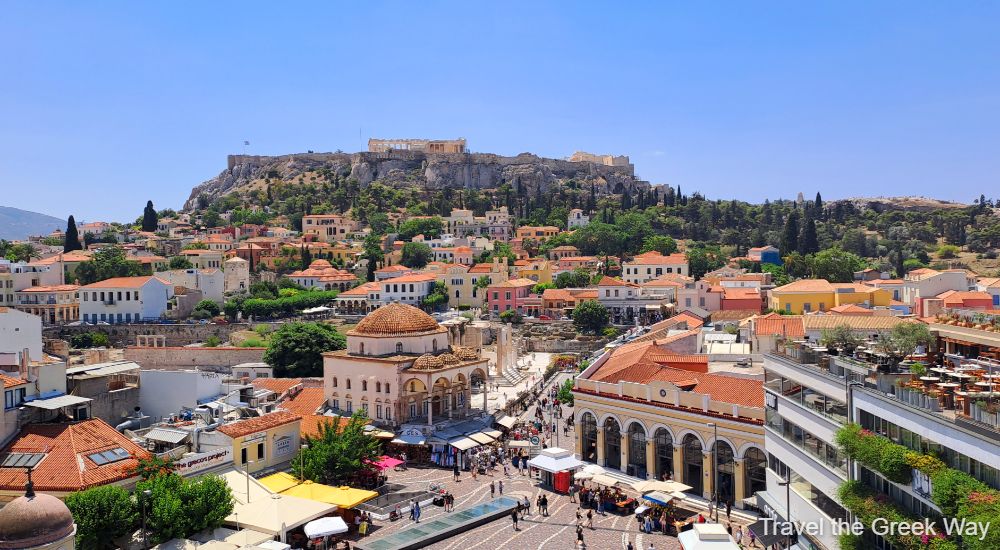
To help you see most of Athens in a short time, I recommend grouping the monuments based on their location. This way, you can conveniently visit several in one day. These are the most important sites you can visit but you may not have time for all of them.
DAY 1 (mostly on foot):
- Acropolis Hill
- Plaka Old Athens, is a great place for food-tasting
- Roman Agora
- The Library of Hadrian
- Ancient Agora
- Kerameikos
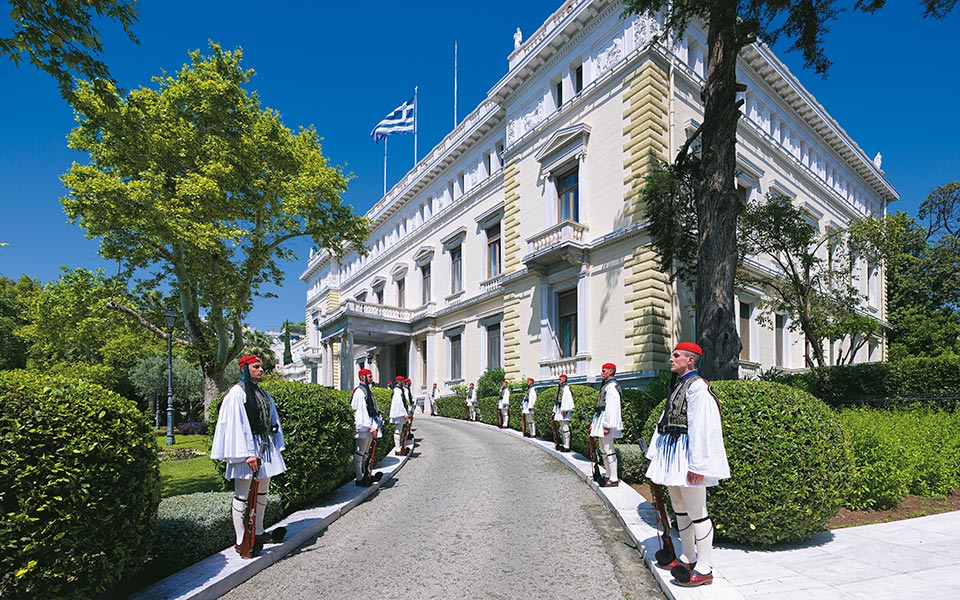
DAY 2: Go to Acropolis Metro and start walking towards Amalias Avenue having Acropolis on your back. It can be walked or you can go by private car/metro.
- Acropolis Museum
- Filoppapos Hill (great for a short hike)
- Hadrian’s Gate & Temple of Zeus (Olympeion)
- Panathenaic Stadium or Kallimarmaro
- Zappeion Park and National Gardens
- Lyceum of Aristotle
- Museums of Benaki, Byzantine, National Gallery
- Greek Parliament, Change of Guards, and Syntagma Square.
2Day Itinerary Athens Greece – Day 1
The Acropolis of Athens: The Sacred Hill
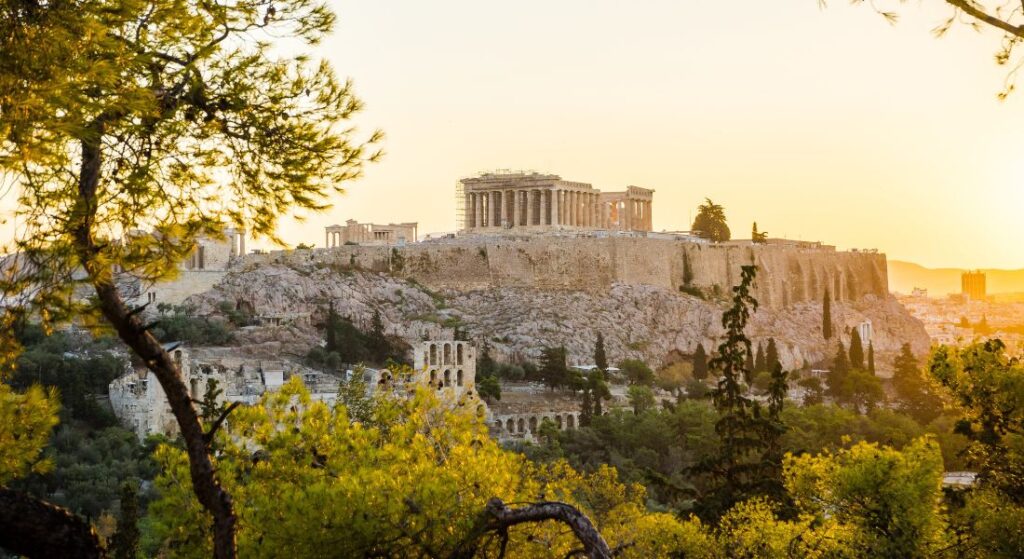
Acropolis is the ancient Athenian Citadel, situated in the center of Athens on the elevated ground of the Hill at 156 meters above the sea.
Acropolis Hill, the most striking and complete ancient Greek monumental complex still existing, contains the remains of important Classical Greek Temples, Greek and Roman theatres, and other significant buildings. For more info on Acropolis see 16 Things to Know before you Visit Acropolis.
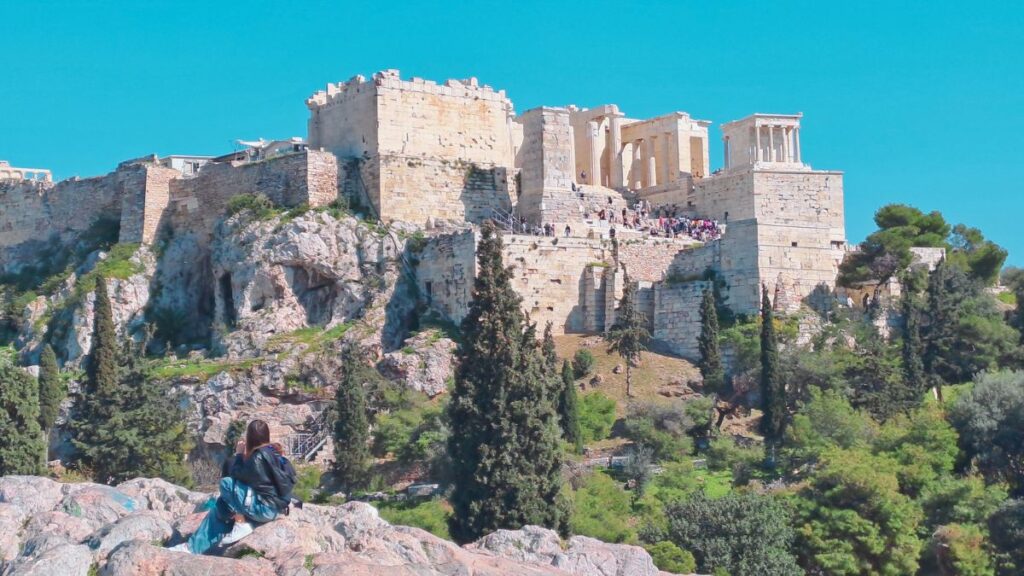
Acropolis Entrances
There are two entrances to the Acropolis of Athens, the northwest main one and the eastern entrance right across the Acropolis Museum and less than a minute’s walk from the Acropolis Metro Station.
Both entrances involve some uphill walk. I prefer the eastern entrance as you can easily see all the monuments naturally and you won’t miss any of them by accident.
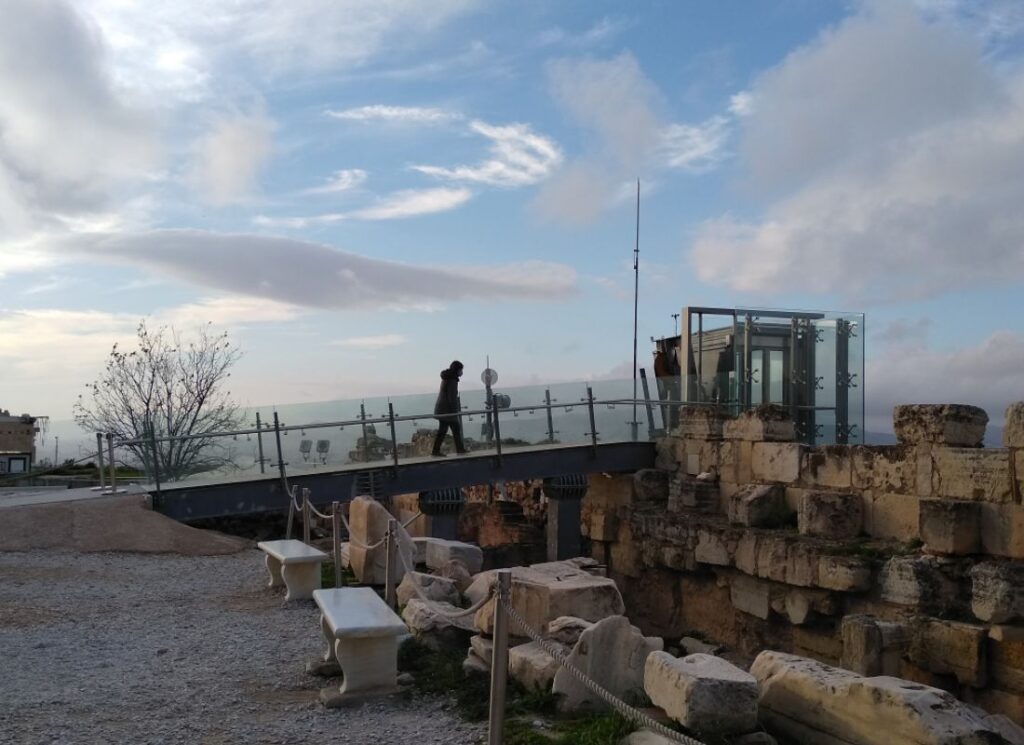
Accessibility Tip: If you need to use the Acropolis elevator, then choose the northwest main entrance where a new elevator (lift) was installed in December 2020 for people with disabilities.
It can be reached by the northeastern side of the Acropolis.
Acropolis Hours of Operation
- Summer: April 1 to October 31 – 8 am to 8 pm (last entrance 7.30 pm)
- Winter: November 1 to March 31 – 8 am to 5 am
- Closed on: January 1, March 25, May 1, Easter Sunday, the second day of Easter, December 25 & 26
Parthenon Temple on Acropolis
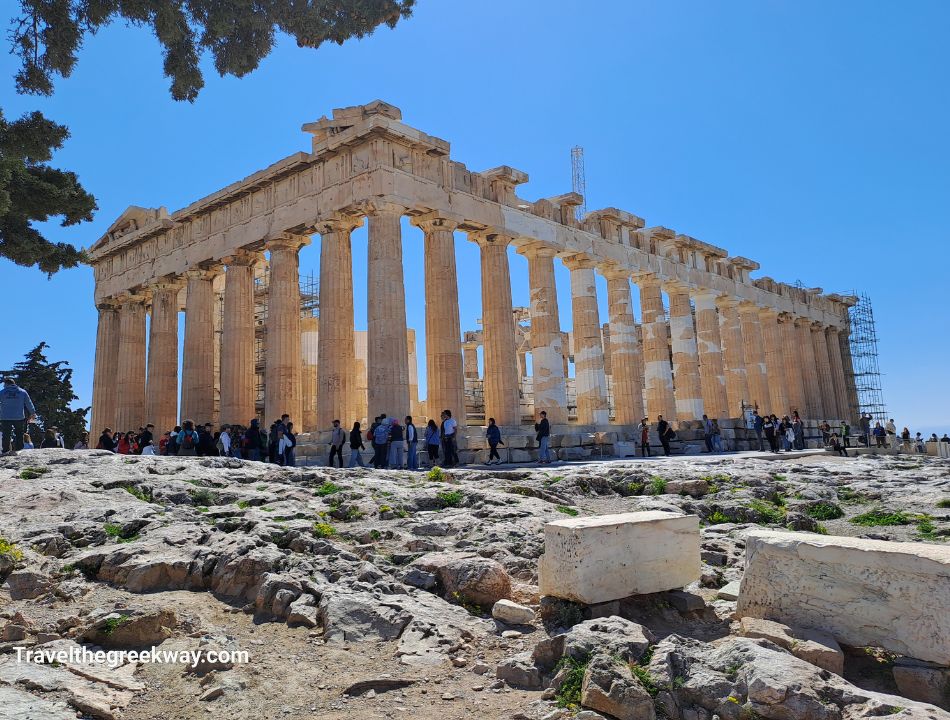
Parthenon is a top monument for your 2Day Itinerary Athens Greece:
Parthenon was built between 447-432 BCE by the Architects Iktinos and Kallikrates. The temple is a large mixed-style temple that housed a spectacular gold and ivory statue of Athena Parthenos that has been lost. The combination of Doric metopes and the Ionic frieze on the walls are considered unique masterpieces.
Elgin looted much of the temple’s sculptural decoration – along with one Karyatis from Erechtheion – causing in the procedure horrendous damage to the Temple and sold it to the British Museum in 1803. More about the Parthenon here.
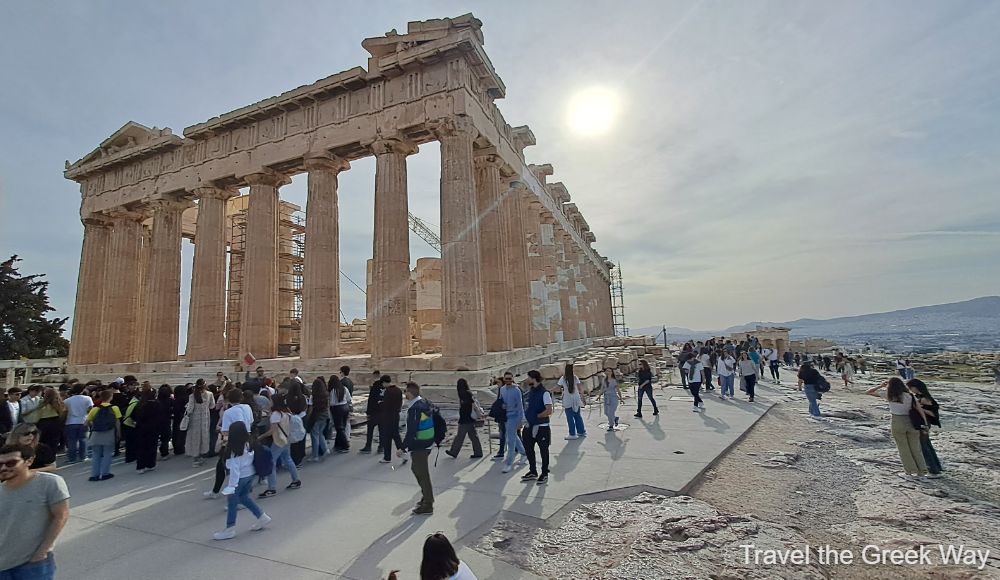
The remaining Parthenon marble can be seen in the Acropolis Museum.
Erechtheion Temple
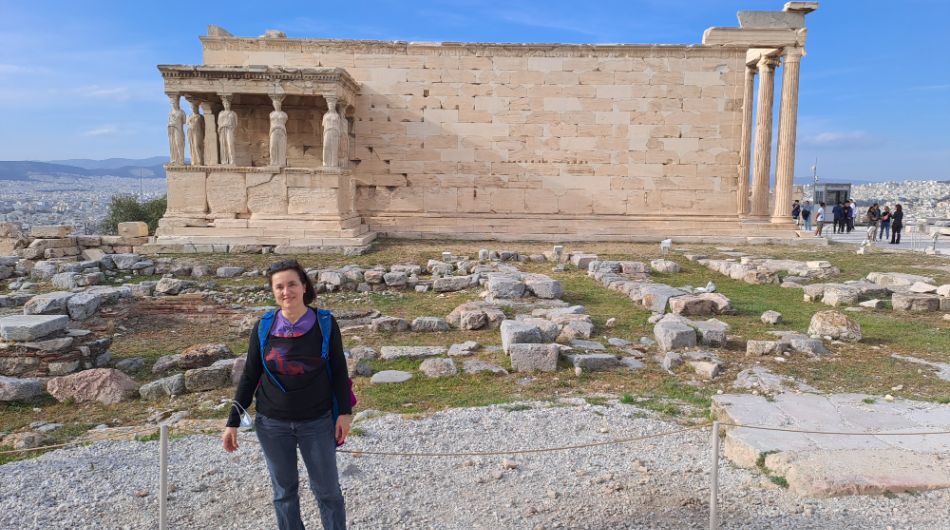
The Erechtheion Temple is a Pentelic marble Ionic-style architecture, dedicated to Athena and Poseidon. The Athenians started building it in 421 BCΕ, but due to the Peloponnesian wars, it ended in 406 BCΕ.
Erechtheion was named after the demi-god Erechtheus, the mythical Athenian king. It is best known for its porch supported by six draped female figures (Caryatides) as supporting columns. It is located right across from the Parthenon Temple.
Athena Nike Temple
A small Ionic temple located to the right of the Propylaea was built in 421 BC, as a shrine to Athena Nike (Victorious) from the design of the architect Kallikrates.
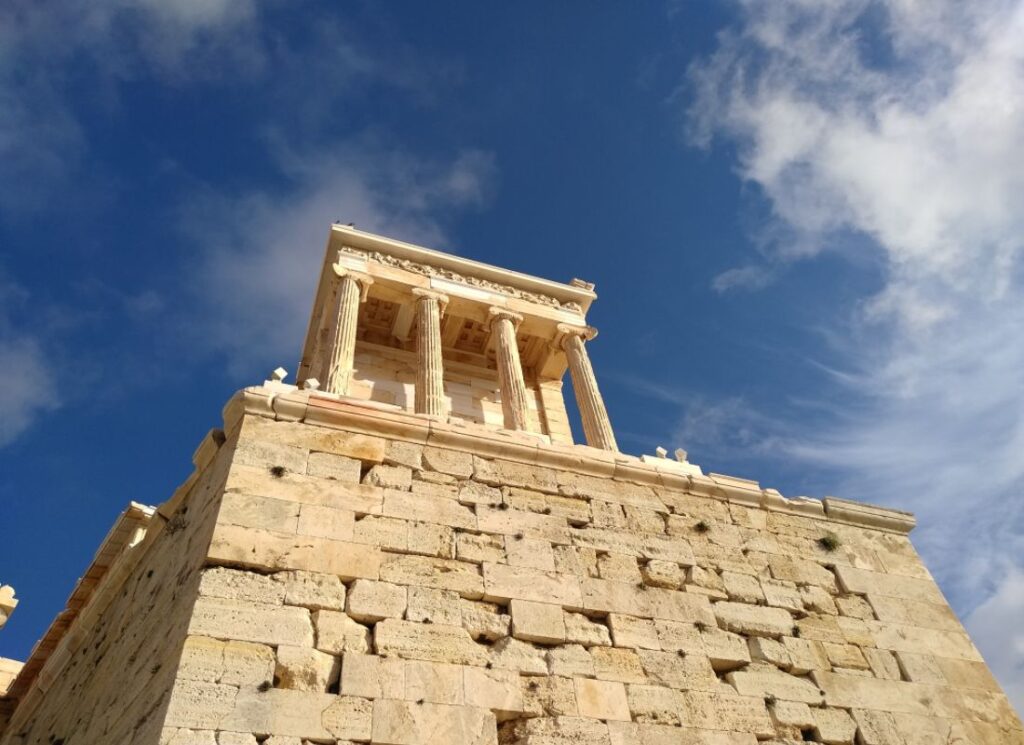
The temple of Athena Nike, as with all Greek temples, was considered a sacred place for the goddess, represented in its statue, and was not a place where regular people would enter.
Acropolis Propylaea
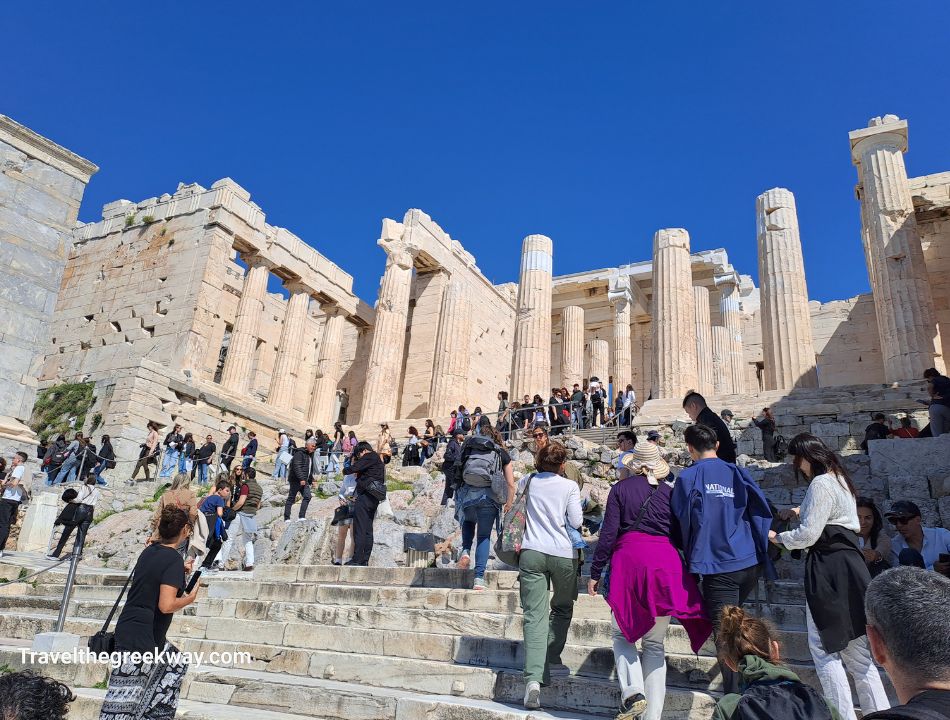
Propylaea means “Front Doors” and it is a monumental entryway to the Acropolis that includes a central building and two wings. The impressive entrance was built during 437-432 BC under the supervision of the architect Mnesicles. This is a monument in Pentelic marble dedicated to the goddess Athena.
Odeon of Herodes Atticus
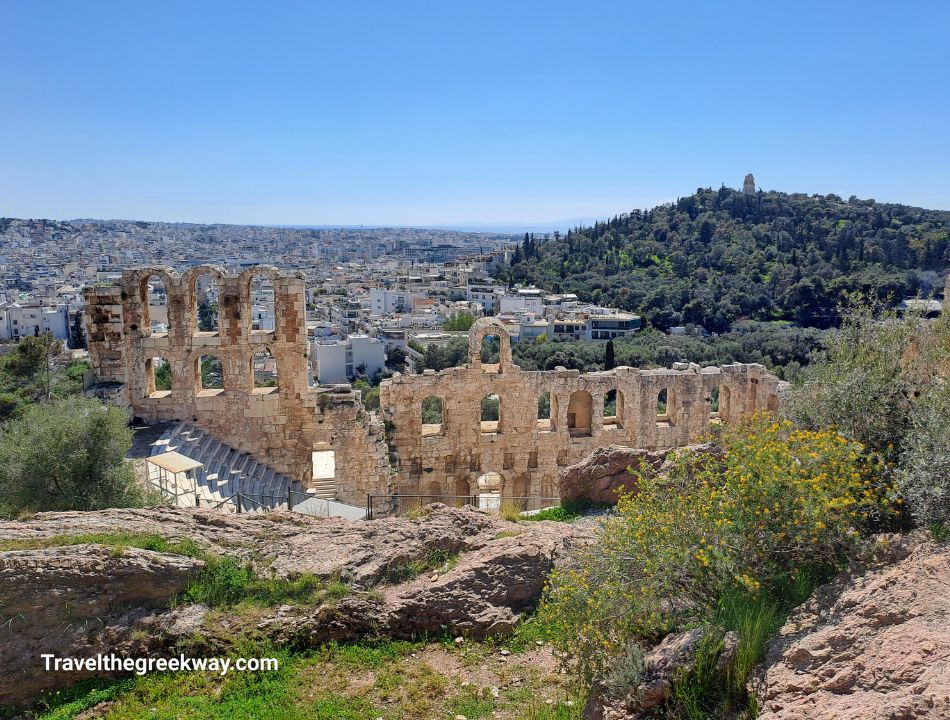
Odeon of Herodes Atticus (also called Herodeion or Herodion) is a Roman stone theatre built by Herodes Atticus, a wealthy Roman, in 160 AD in the loving memory of his wife Aspasia Annia Regilla. It lasted intact until it was destroyed and left in ruins by the Heruli in 267 AD.
Today, the Odeon of Herodes Atticus hosts the summer Athens Festival along with the Theater of Epidaurus and famous artists come from all over the world to perform.
Theater of Dionysus Eleuthereus
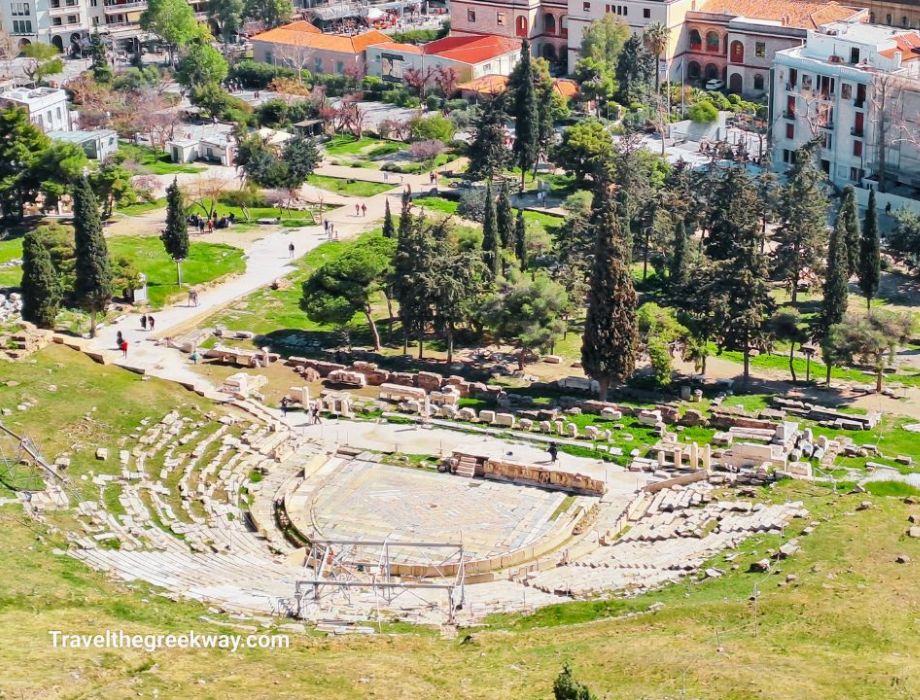
Continuing your 2Day Itinerary Athens Greece in the Acropolis you get to the famous Theater of Dionysus. The very first theatrical plays were performed in the Theater of Dionysus, and it is believed to be the first theatre ever constructed.
The Theatre of Dionysus Eleuthereus is situated on the south side of the Acropolis in Athens. The theatre’s auditorium had 17.000 seats and all the ancient Greek masterpieces of Aristophanes, Aeschylus, Euripides, and Sophocles were first performed there.
Areopagus or Mars Hill
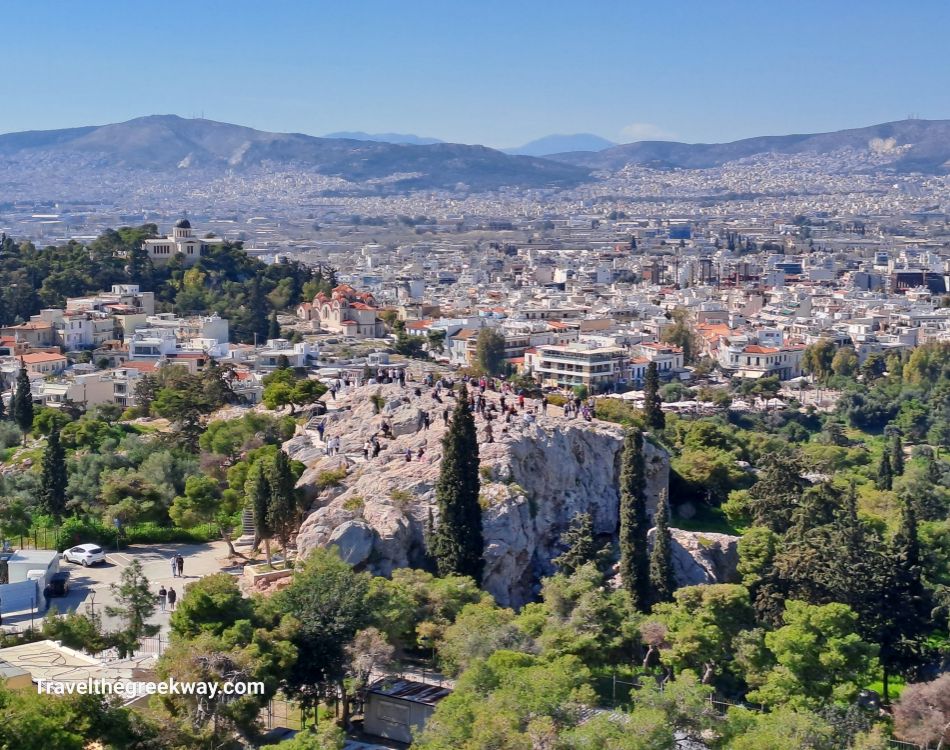
The Areopagus Hill or Areios Pagos (Rock of Aris) or Mars Hill is a prominent low rock hill located right across the northwest main exit of the Athens Acropolis. The 115-meter rock was also the place in Ancient Greece where cases of premeditated murder, arson, and sacrilege were trialed.
Apostle Paul, in his second missionary trip (around 50 AD) gave the famous speech to the Unknown God mentioned in Bible Acts 17:23. At the entrance of the Areopagus Hill, close to the stairs, stands today a stone inscription of his speech the Athenians.
Free Entrance to the site.
Old City of Athens, Plaka
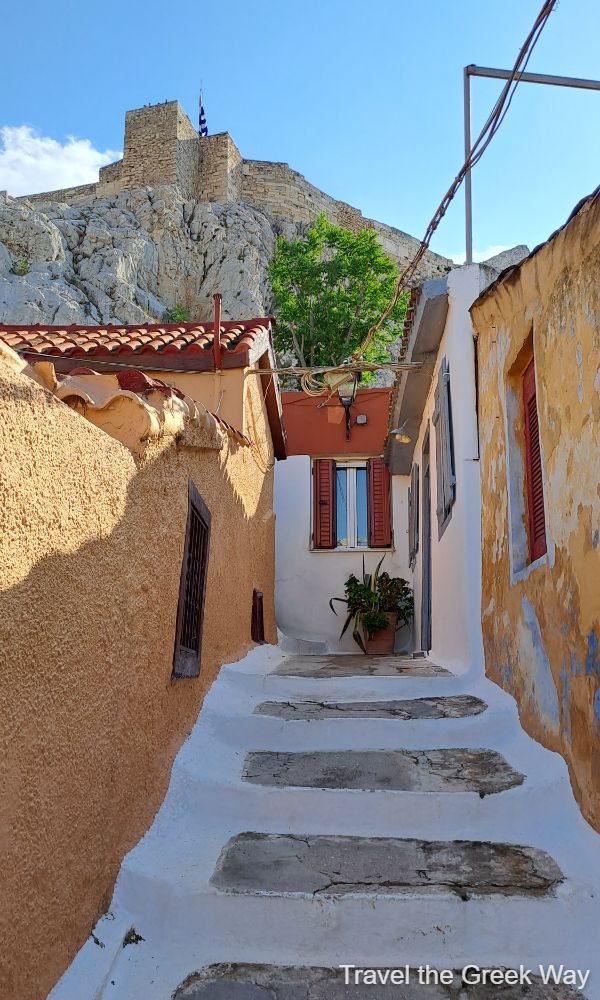
Right under the north slope of the Acropolis lies Anafiotika, a tiny neighborhood in Plaka. The place has small whitewashed houses built according to Cycladic architecture. Wandering among these houses will make you feel as though you were teleported to a Greek island.
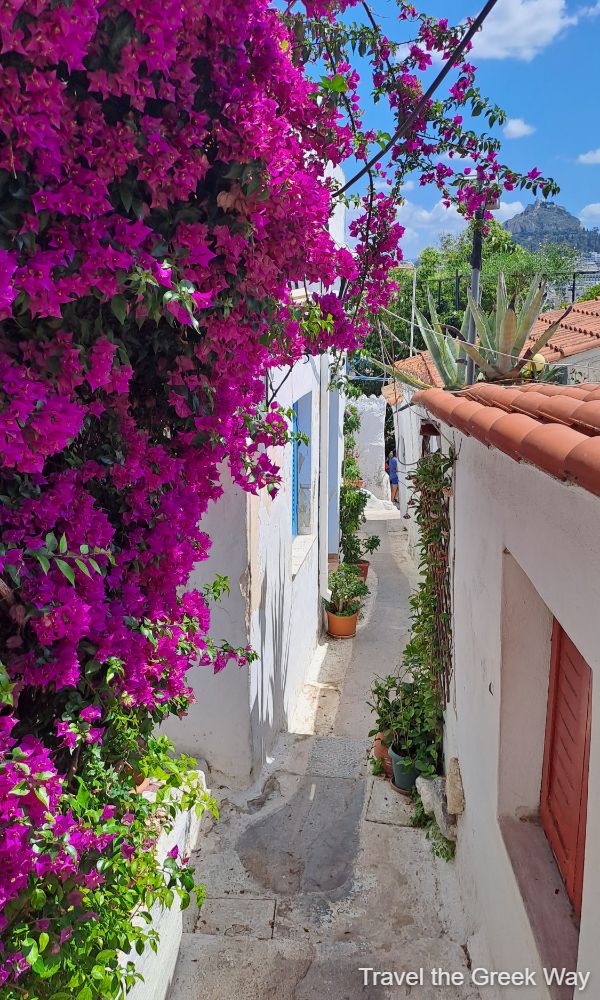
The story behind Anafiotika Plaka: In 1840, experienced builders from the island of Anafi came to Athens to work on the new Royal Palace and excavation sites around the Acropolis.
Choragic Monument of Lysicrates
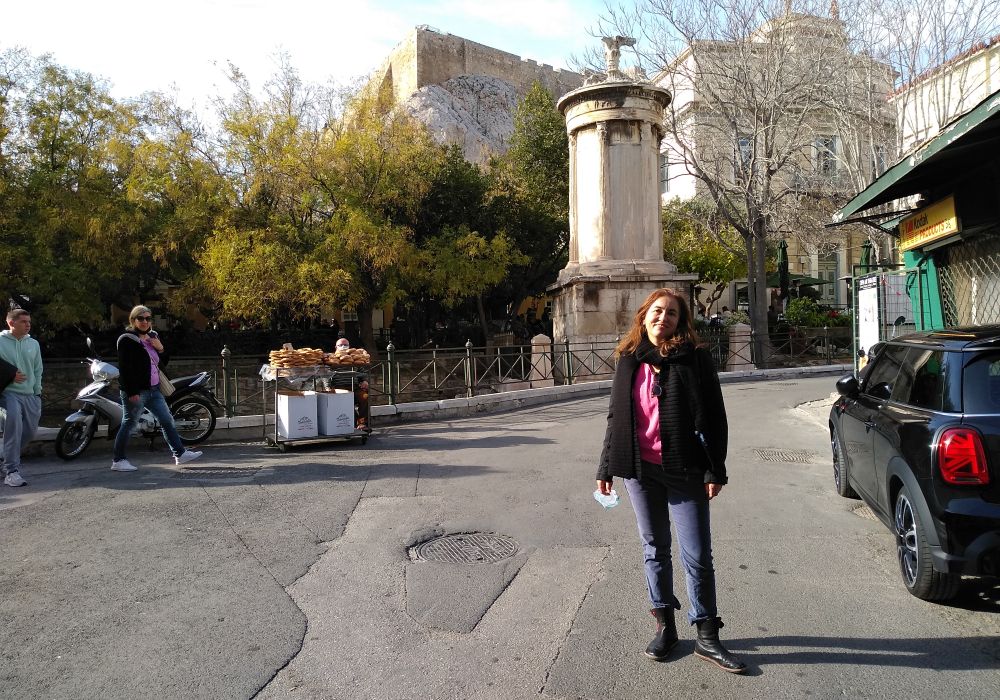
In Plaka lies the only surviving choragic monument, the Choragic Monument of Lysicrates, a trophy awarded in 334 BCE for the winning dramatic chorus.
The monument can be found on Tripodon Street, it is in very good condition, and behind it, there is a beautiful garden where you can have a refreshment while admiring the Athenian Landmark.
Free Entrance.
Roman Agora
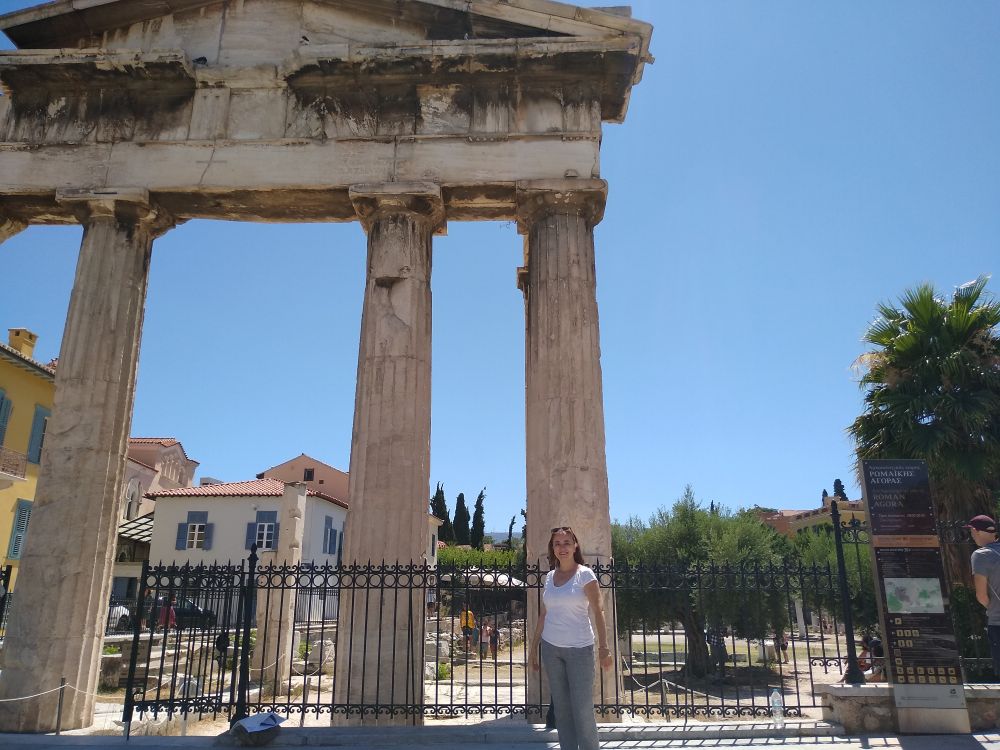
The Roman Agora was built (approximately) 5 centuries later than the Ancient Agora, between 19 and 11 BCE. with a donation from Julius Caesar and Augustus. It is located in the north of Acropolis in the Plaka area.
After the invasion of the Herulae in 267 CE, the administrative and commercial center of Athens was transferred from the Ancient Agora to the Roman Agora and the Library of Hadrian.
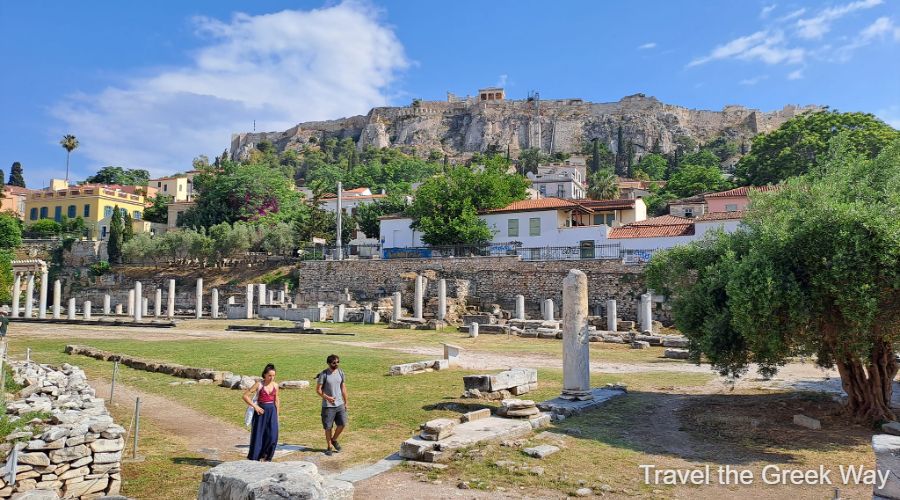
Inside the Roman Agora, you will see the Ottoman Fethiye Mosque-Museum and the Tower of the Winds or Horologion of Andronikos Kyrristos, the world’s first meteorological center.
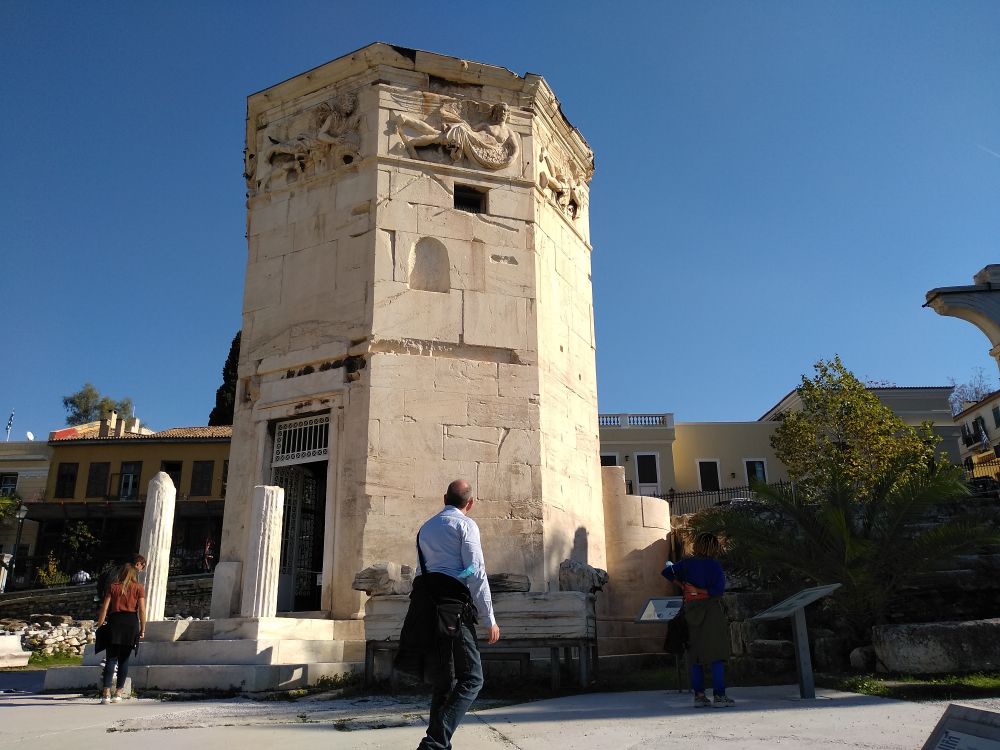
The Tower of the Winds is a tall, octagonal building made of Pentelic marble, which served as an ancient meteorological station.
It was designed by a famous astronomer (Andronikos of Kyrrhos) to be an elaborate water clock, sundial (on the outside), and weather vane. Its name “Tower of the Winds” is derived from the personifications of the 8 winds carved on the 8 sides of the building.
Entrance Cost: €8 from April 1 to October 31; €4 from November 1 to March 31. Included on the €30 combo ticket. Hours: 8 am – 5 pm winter and 8 am – 8 pm summer
If you’re looking for deeper information, check out my in-depth Roman Agora of Athens travel guide for a ton of details.
Hadrian’s Library
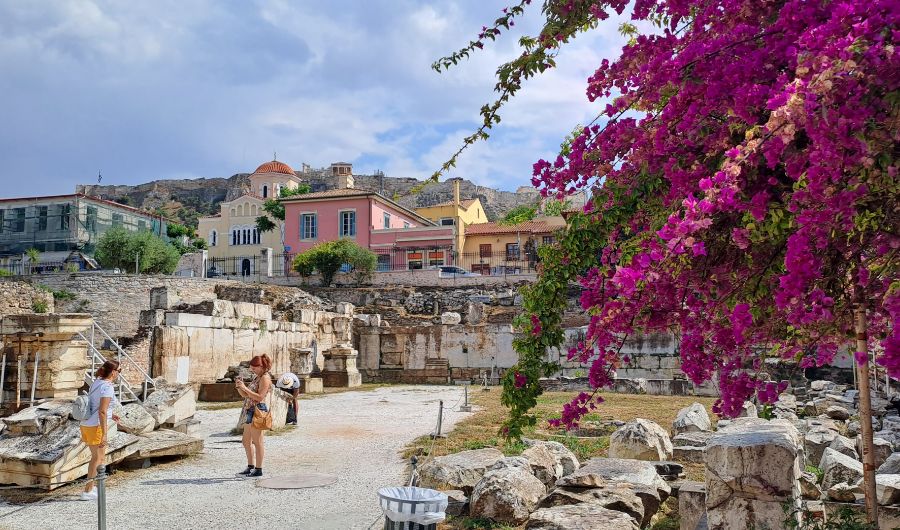
The Library of Hadrian in Athens was constructed between 130 and 132 CE by Roman Emperor Hadrian. The library was used to store important literary works and documents as well as to offer a place to hear lectures and host various philosophical schools.
Entrance Cost: €6 from April 1 to October 31; €3 from November 1 to March 31. Included on the €30 combo ticket.
Hours: 8 am – 5 pm winter and 8 am – 8 pm summer
Ancient Agora of Athens
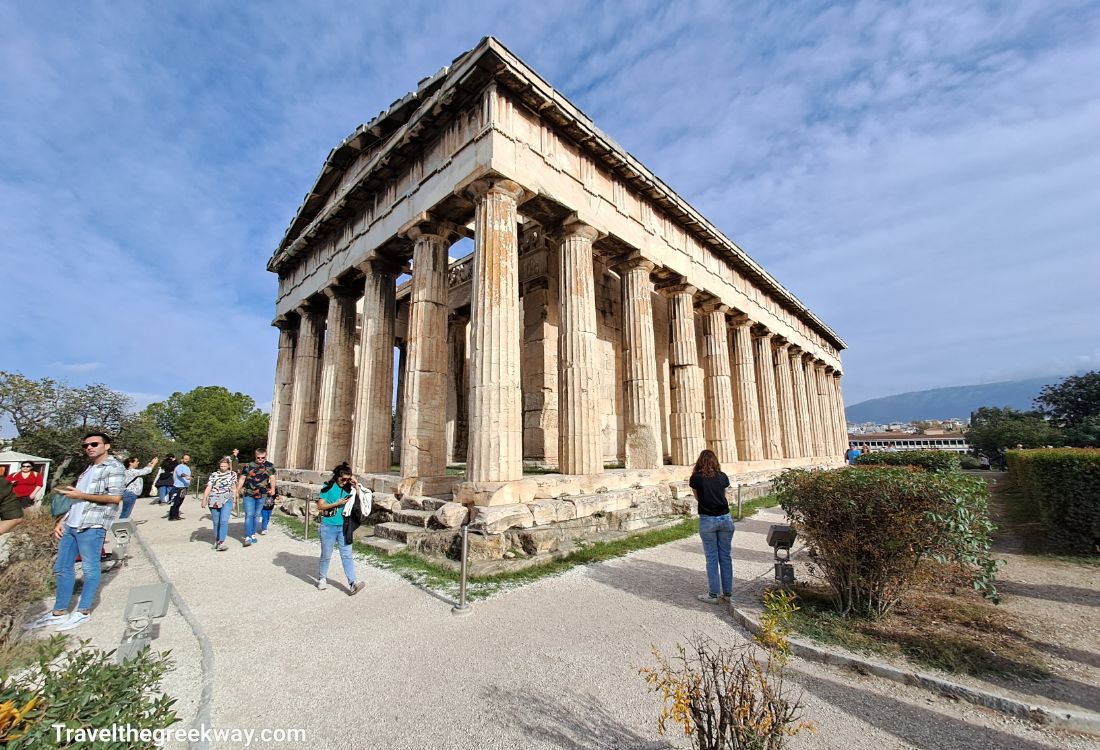
The Ancient Agora of Athens (also called the Classical Agora) is after the Acropolis the second most important monument in Athens. Excavations of the Athenian Agora commenced in 1931 by the American School of Classical Studies. On their website, we read:
“Here (in the Ancient Agora) administrative, political, judicial, commercial, social, cultural, and religious activities all found a place together in the heart of Athens, and the square was surrounded by the public buildings necessary to run the Athenian government.”
There are two imposing buildings in the Ancient Agora:
The Hephaisteion or Temple of Hephaestus, the best-preserved example of a Doric temple in mainland Greece on the right side of the site.
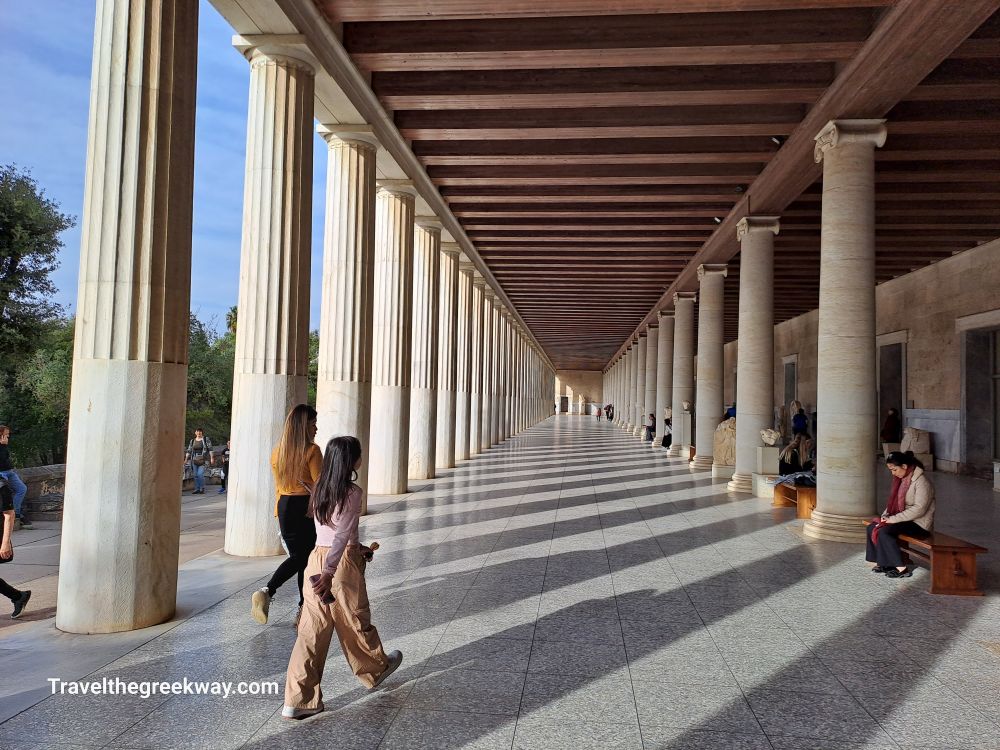
The Stoa of Attalos, on your left, was rebuilt from the ground by the American School of Classical Studies which serves today as a Museum with the findings from the Agora sight.
Entrance Cost: €10 from April 1 to October 31; €5 from November 1 to March 31. Included on the €30 combo ticket.
Hours: 8 am – 5 pm winter and 8 am – 8 pm summer.
Kerameikos Archaeological Site
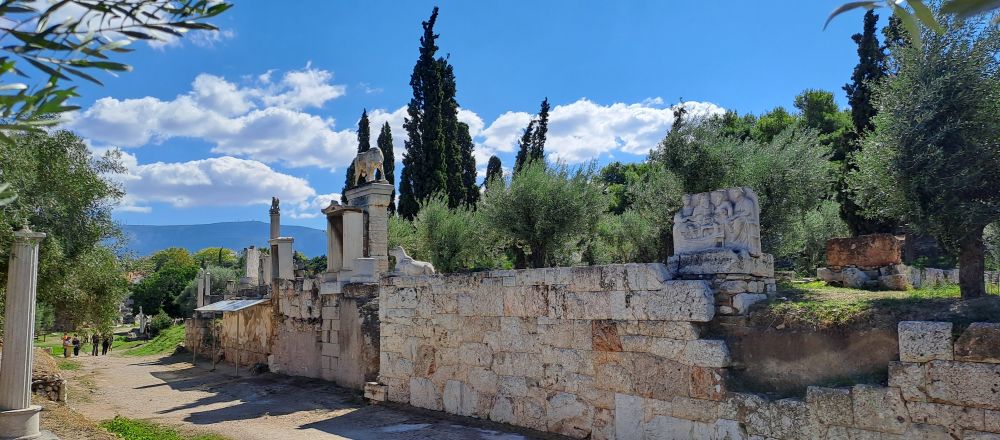
Kerameikos archaeological site is just 10 minutes away on foot from Ancient Agora in the beautiful area of Thision.
Why is Kerameikos important? It was initially a large settlement of potters (ceramic – Kerameikos) and vase painters and the main production center of the famous Attic vases.
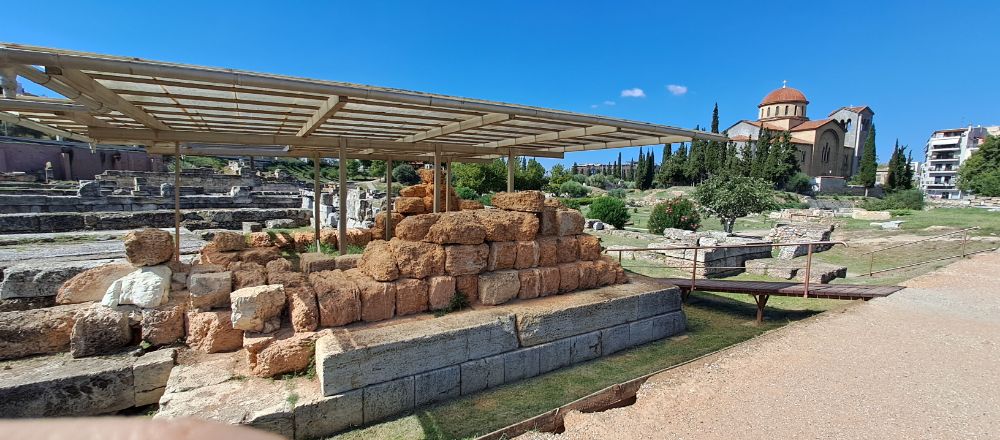
Later, it was developed into the most important cemetery of ancient Athens and was continuously in use from the 9th century BC until Roman times.
Entrance Cost: €8 from April 1 to October 31; €4 from November 1 to March 31. Included on the €30 combo ticket. Hours: 8 am – 5 pm winter and 8 am – 8 pm summer
2Day Itinerary Athens Greece – Day 2
Acropolis Museum
The Acropolis Museum is, along with the National Archaeological Museum, the most significant museum in Athens and one of the best museums in the world.
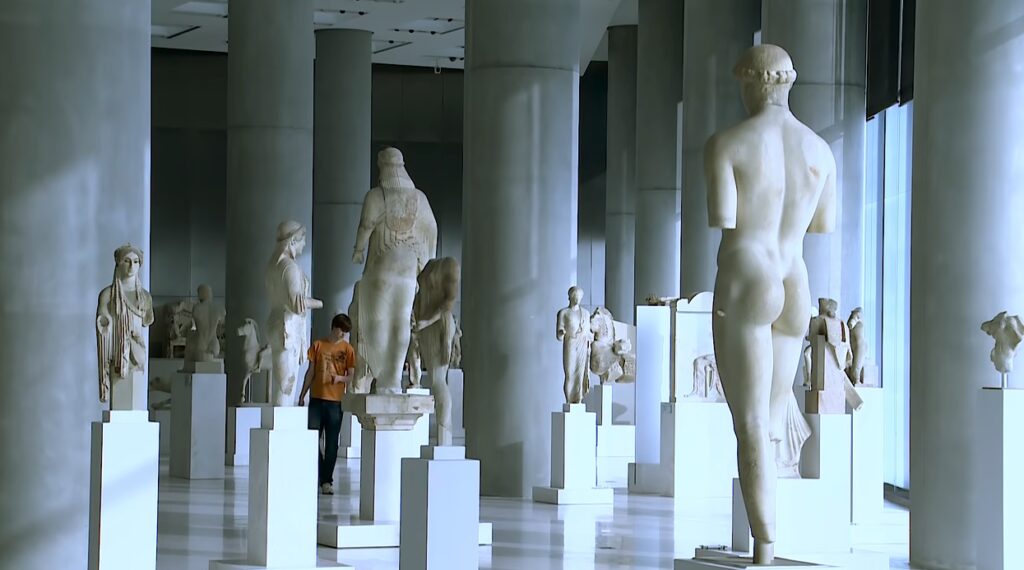
It houses every artifact found on the Acropolis Hill, including the Parthenon’s remaining marble, the original Caryatids from Erechtheion, and other stunning artifacts from the Greek Bronze Age to Roman and Byzantine Greece.
Cost: €10 from April 1 to October 31; €5 from November 1 to March 31. Hours: It is open daily at 8 am but closure time varies by season (between 4 – 8 pm).
For updates on exhibitions, purchase entrance tickets, and other information visit the official Acropolis Museum website.
Filopappos Hill
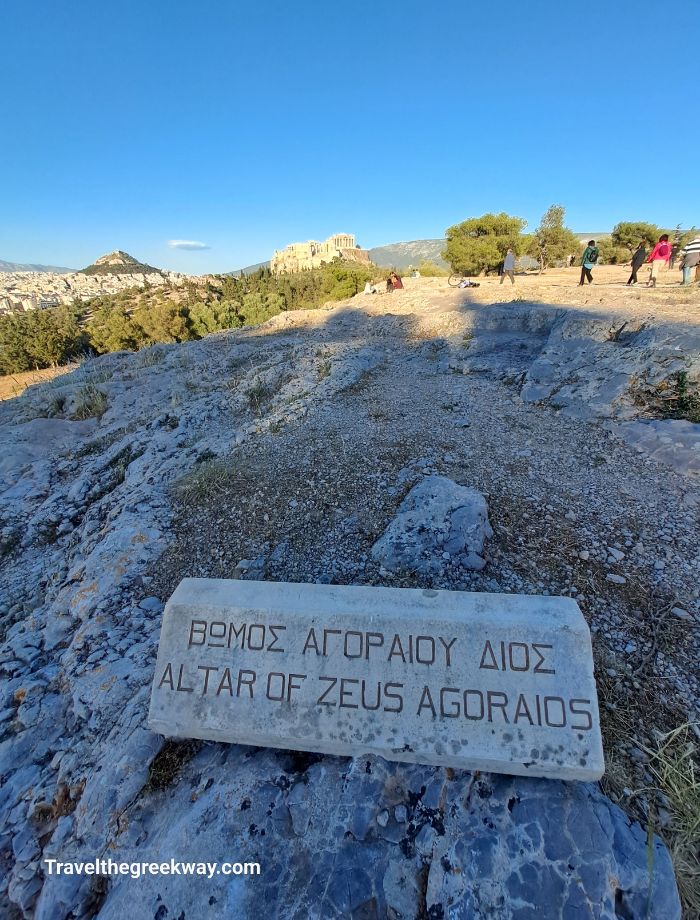
Southwest of Acropolis is situated beautiful wooded Philopappos Hill. On the hill, you will discover important monuments such as:
- The Basilica was built in the 12th century and its frescoes date back to 1732 of Agios Dimitrios Loumbardiaris
- the so-called prison of the great Greek philosopher Socrates
- the Tombs of Kimon
- the Koili Odos (ancient street)
- the Iroon
- the Pnyx Hill
- the Philopappos Monument and a spectacular view of the Acropolis, Lycabettus Hill, the surrounding mountains to the Aegean Sea, and its islands.
Philopappos Hill is an easy hike in the heart of Athens full of surprises, monuments, and stunning views. Free entrance.
Temple of Olympian Zeus and Hadrian’s Gate
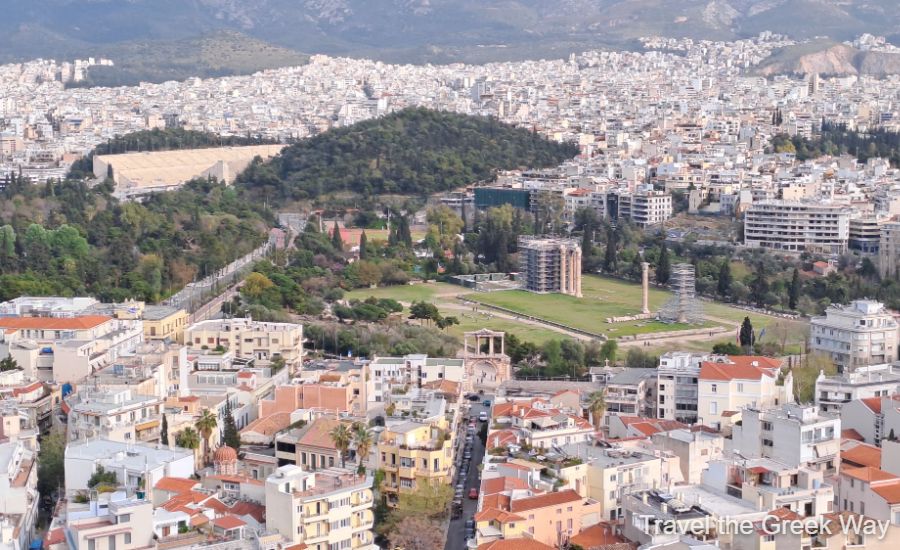
The Temple of Olympian Zeus also known as the Olympieion or Columns of the Olympian Zeus is a former colossal temple. It is located a short distance from the Acropolis Museum or the Monument of Lysicrates.
During the Roman period the temple, which included 104 colossal Corinthian columns, was renowned as the largest temple in Greece. The temple suffered over the centuries and much of its material was reused in other buildings. Fifteen columns remain standing today and a sixteenth column lies on the ground where it fell during a storm in 1852.
Entrance Cost: €8 from April 1 to October 31; €4 from November 1 to March 31. Included on the €30 combo ticket.
Hours: 8 am – 5 pm winter and 8 am – 8 pm summer
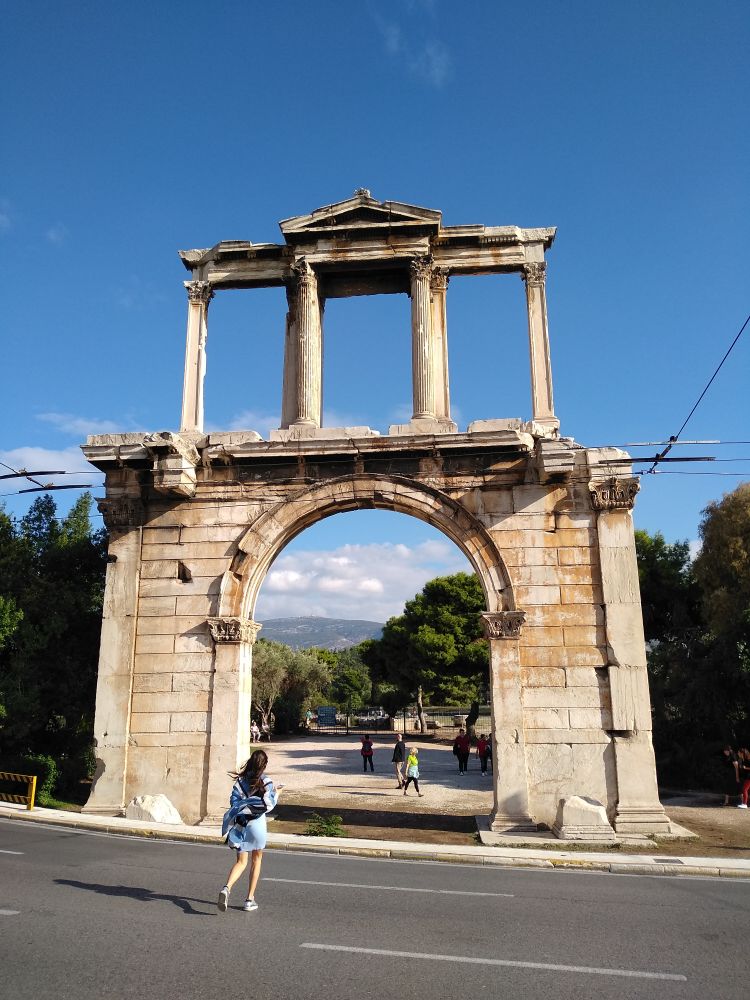
Right outside the Temple of Olympian Zeus, facing the main Amalias St. stands Hadrian’s Gate, a Pentelic marble monument, erected in 131-132 A.D. in honor of Roman Emperor Hadrian, a benefactor of Athens. Free Entrance.
Panathenaic Stadium
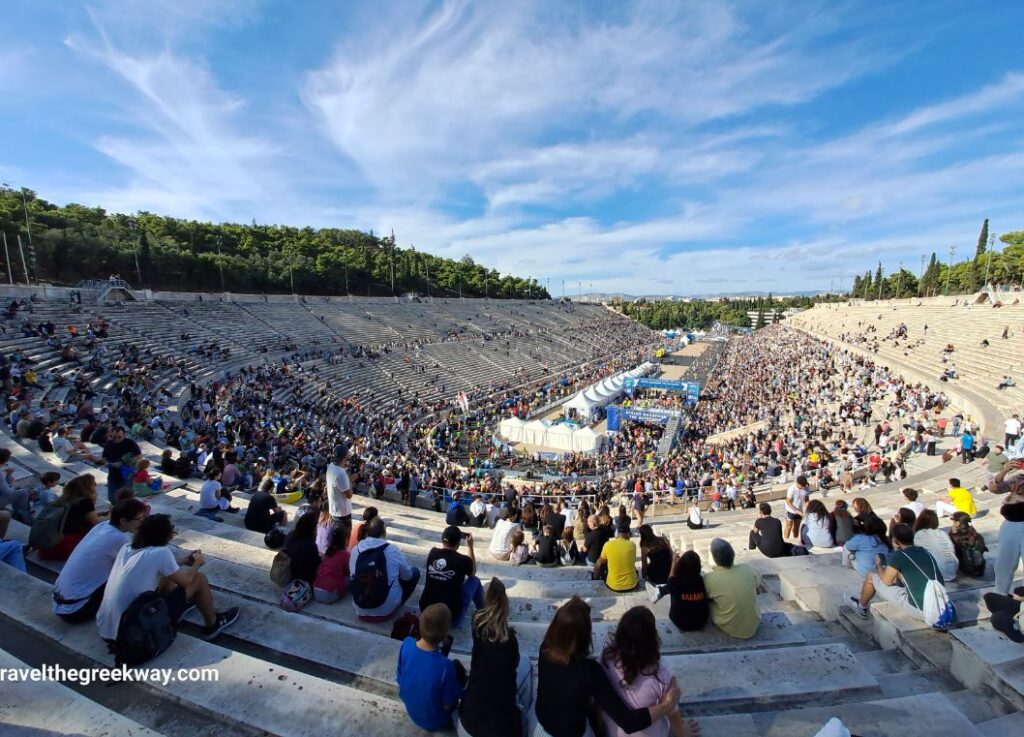
The Panathenaic Stadium or Kallimarmaro is one of the main historic attractions of Athens and the only stadium in the world built entirely of marble.
The stadium was excavated in 1869 and hosted the opening and closing ceremonies of the first modern Olympics in 1896. Today, it is used as the finishing point for the annual Athens Classic Marathon as well as the last venue in Greece from where the Olympic flame handover ceremony to the host nation takes place.
Entrance Cost: €10 from April 1 to October 31; €5 from November 1 to March 31.
Hours: 8 am – 5 pm winter and 8 am – 7 pm summer.
Zappeion Mansion
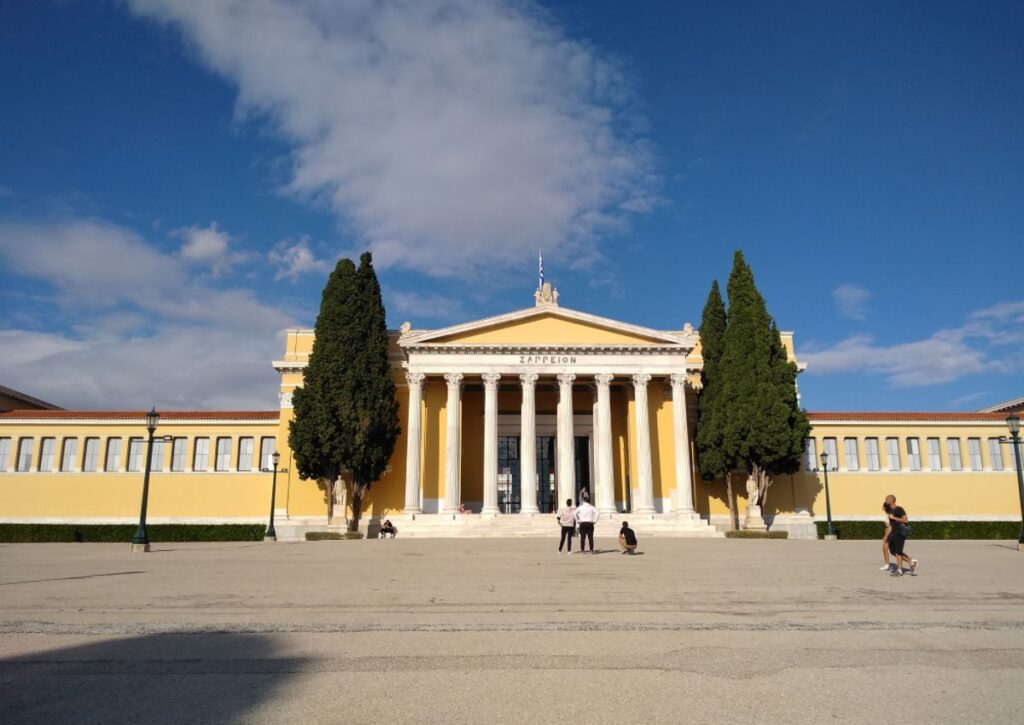
Right across from the Stadium are the Zappeion Park and the Zappeion Megaron (Mansion), which was built to support the modern Olympic Games. It was sponsored by Evangelos Zappas, a Greek patriot, businessman, and one of the founders of the modern Olympic Games.
During the first modern Olympic Games in 1896, the Zappeion was used as the main fencing hall, hosting matches in its atrium. Zappeion Mansion is next to the National Gardens of Athens.
What else is around?
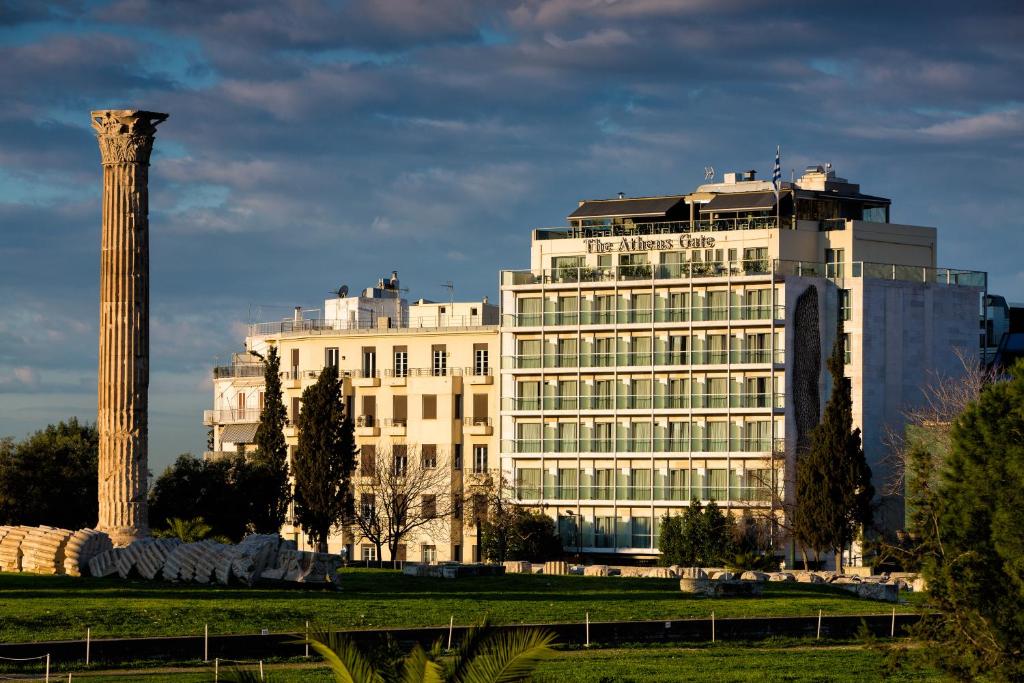
- The Temple of Zeus and Hadrian’s Arch right across its main entrance
- The Greek White House in Irodou Attikou St.
- The Athens Gate Hotel with panoramic views of the Acropolis, the Park, and the Temple of Zeus
Lyceum Of Aristotle
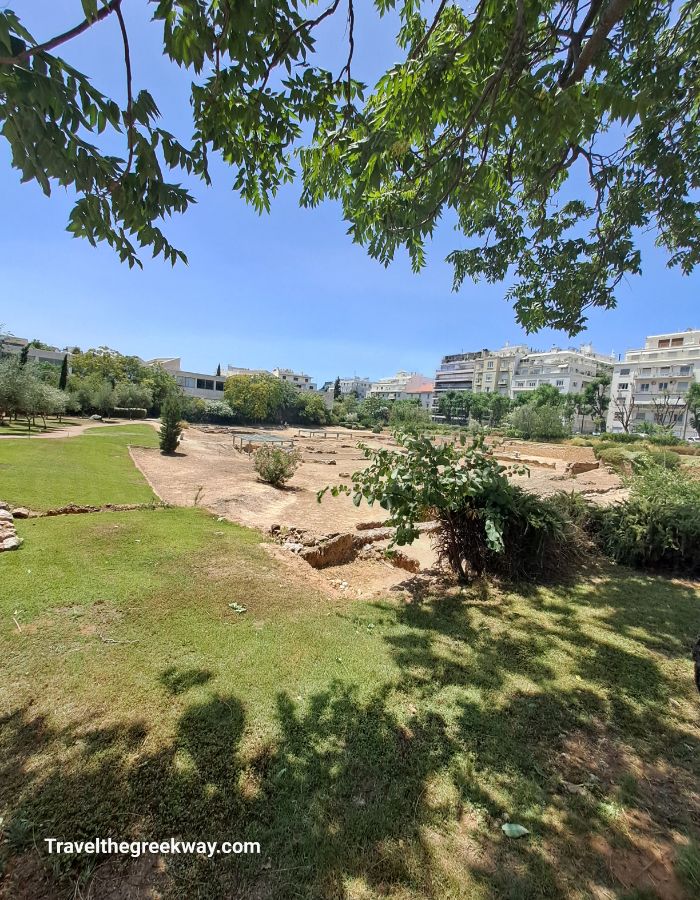
The Lyceum of Aristotle was discovered in downtown Athens only 14 years ago. The Lyceum is mostly renowned for the philosophical school founded there by Aristotle upon his return to Athens in 335 BC after being the private tutor of the young prince Alexander of Macedon, the future Alexander the Great, since 343 BC.
Why Lyceum of Aristotle is important? It is one of the three oldest gymnasia in Athens, the other two being Plato Academy and Kynosarges by the river Ilissos.
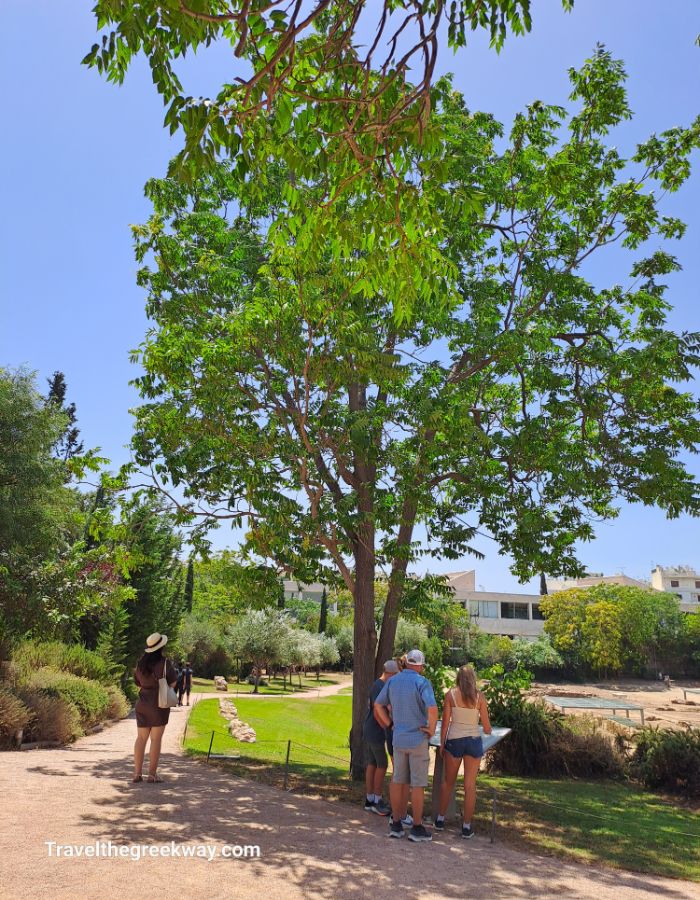
How to get there? It is at Rigilis St, between the Syntagma Metro and Evangelismos Metro stations. You can easily walk there from Syntagma Square, a 10-15 minute beautiful walk by the National Garden.
Entrance Cost: €4 from April 1 to October 31; €2 from November 1 to March 31. Included on the €30 combo ticket.
Hours: 8 am – 5 pm winter and 8 am – 8 pm summer
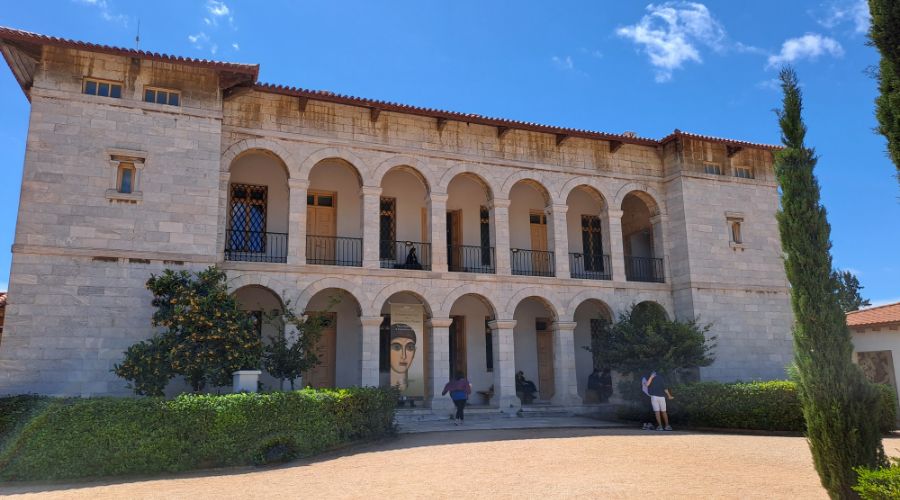
Exceptional Museums to visit in the area:
- Byzantine & Christian Museum (has a fantastic yard for breakfast or a coffee in the back)
- Museum of Cycladic Art (top museum for your 2Day Itinerary Athens Greece)
- Benaki Museum
- Goulandris Museum (This is very close to Panathenaic Stadium)
- Greek National Gallery
Greek Parliament
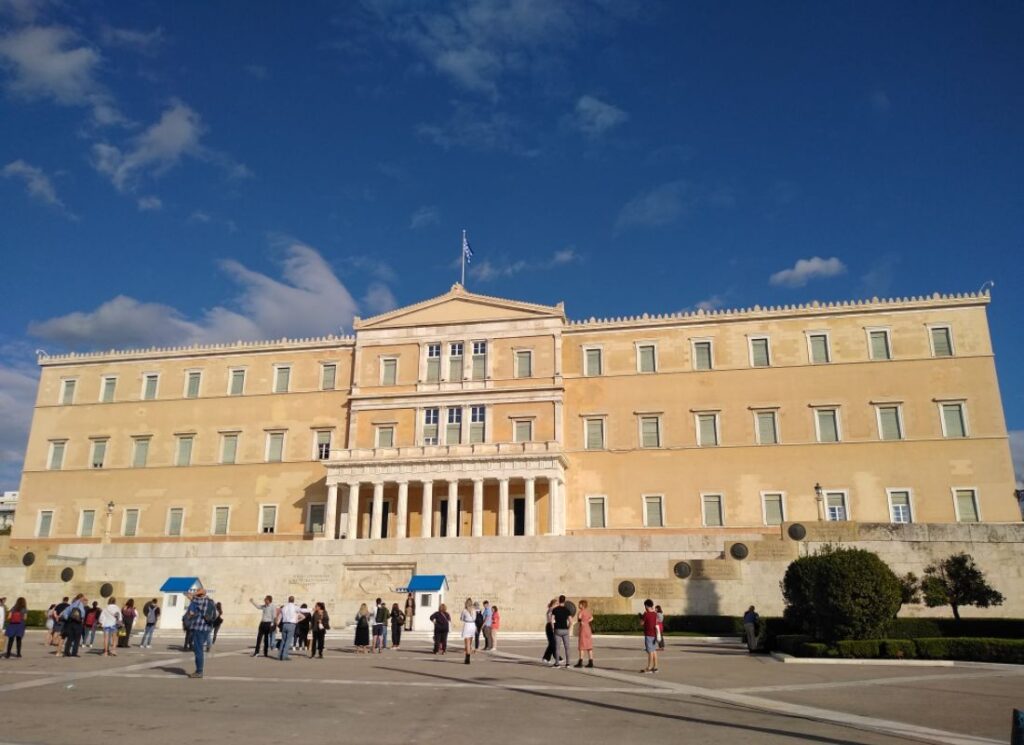
The Greek Parliament sits right in the very center of Athens, where the city’s heartbeats and all the great political events have happened, on Syntagma Square.
The lean neoclassic structure was designed by Friedrich von Gartner and completed in 1843. It first served as a Palace until 1924, when a referendum abolished the monarchy. It is next to the National Gardens and Zappeion Megaron.
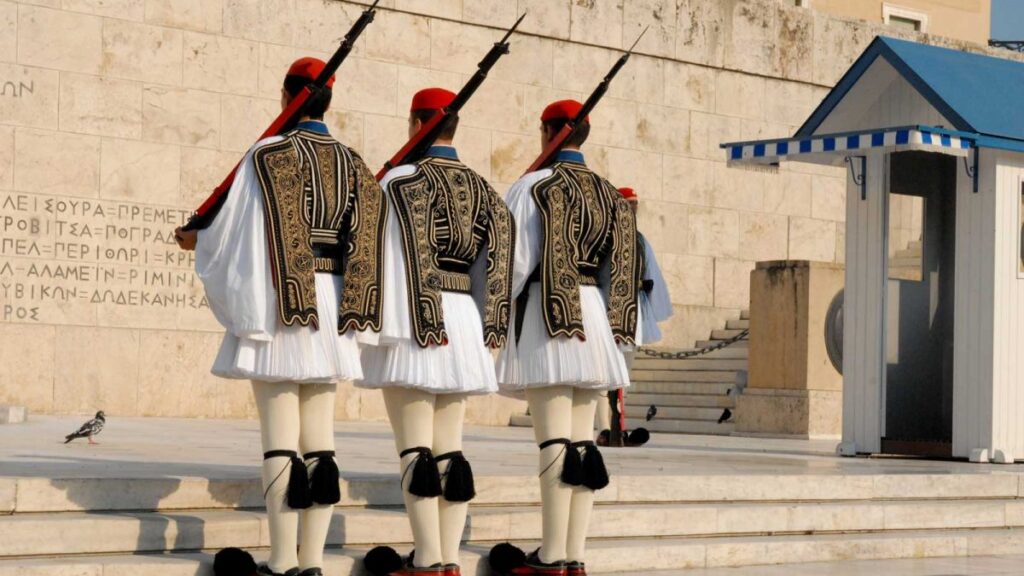
In front of the Parliament House, there is the monument, the Tomb of the Unknown Soldier. It is guarded by the Greek army, the Evzones, dressed in the official traditional Greek uniforms, and every half an hour they engage in disciplined and proud ceremonial pacing. The changing of the guards is a ceremony that is very impressive and takes place every hour.
What else is there?
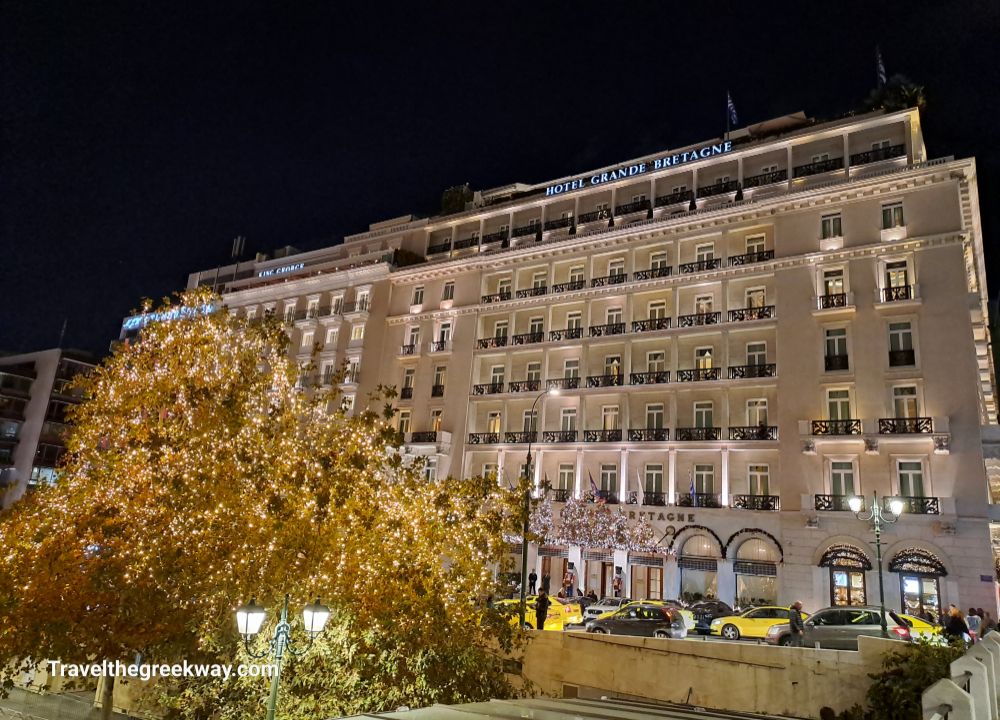
- The legendary and most luxurious hotel in Greece: Grande Bretagne Hotel
- The beginning of Ermou St, one of the most commercial streets of Athens
- The exhibition of antiquities found in the Syntagma metro
Athens Trilogy
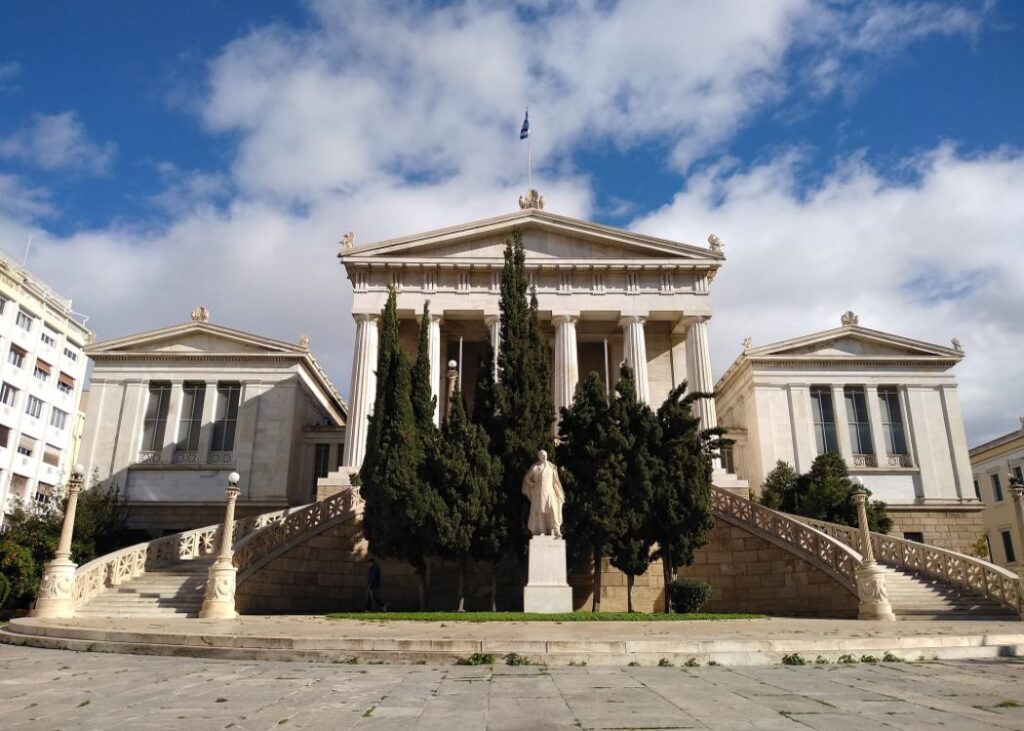
Only a metro station away from Syntagma Square, at Panepistimiou Metro, stand three elegant, monumental pieces of neoclassical buildings, widely known as the Athens Trilogy. They were designed in the mid-19th century by the Danish Hansen and built between 1864 to around 1890.
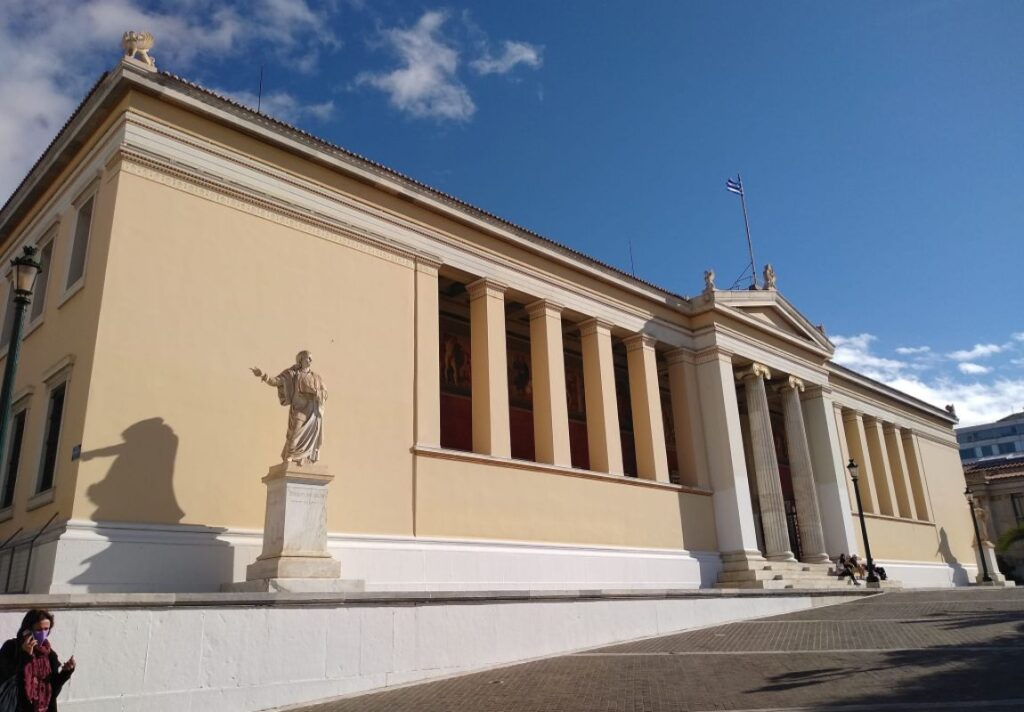
The National Library of Greece, a Pentelic Marble building holds some 2.000.000 volumes of books and over 4.500 manuscripts. The University houses some administrative services and offers impressive halls for ceremonial events.
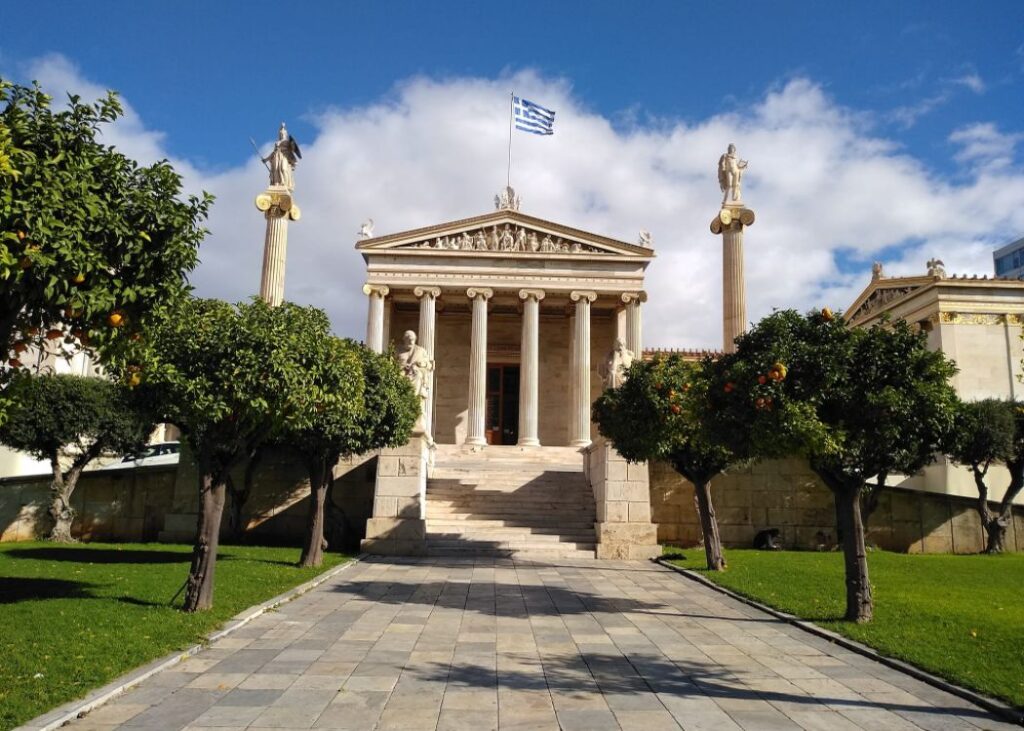
And the – inspired Propylaea – Academy, is dedicated to the preservation of Hellenic intellectual heritage.
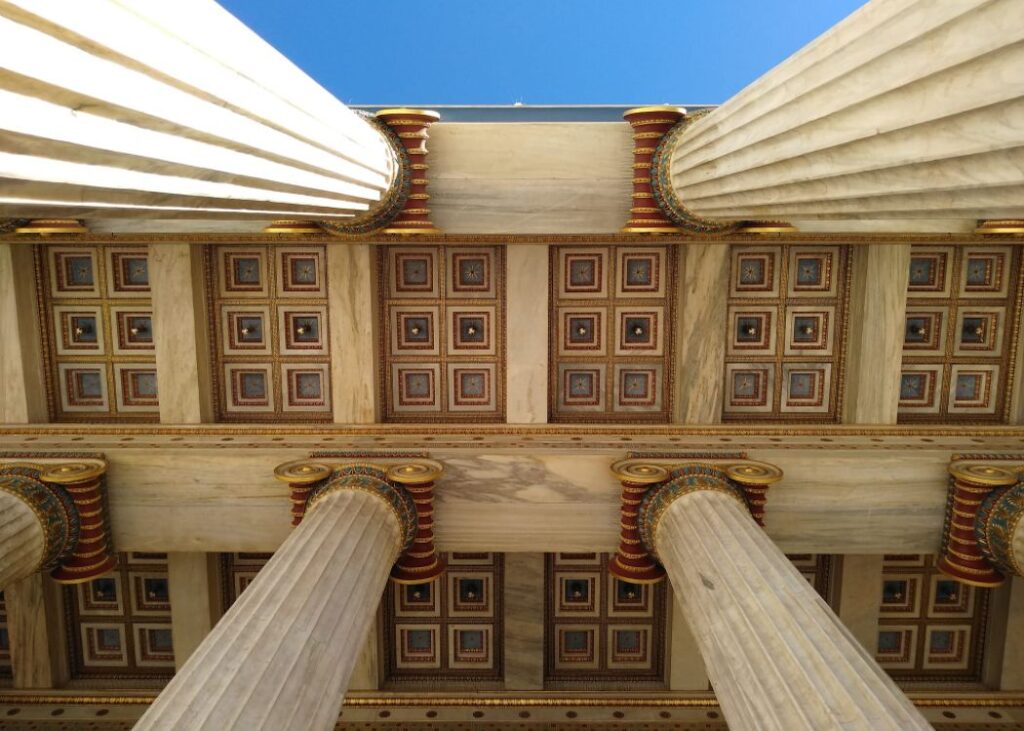
The entrance is guarded by Plato and Socrates statues, the two great philosophers who along with Aristotle laid the foundations of Western thought and civilization.
You can all visit them on the outside.
Lycabettus Hill & Chapel of St George
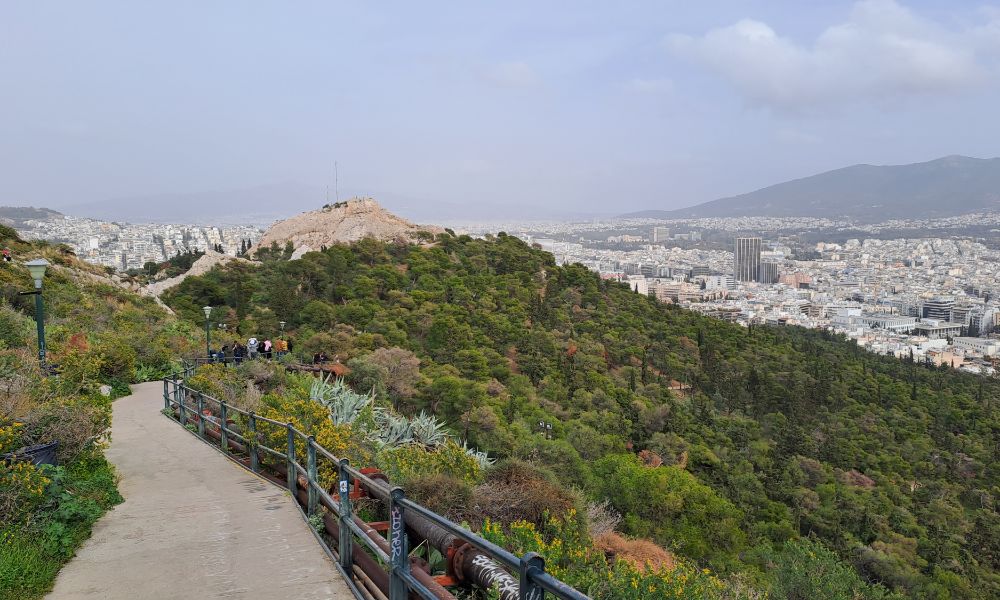
St George Lycabettus is a Greek Orthodox church perched on top of the highest hill in the center of Athens, Lycabettus Hill.
It has arguably the best panoramic view of all of Athens, Acropolis Hill, and surrounding mountains. Besides offering a stunning view, Lycabettus Hill houses the Chapel of St. Isidoros, the Lycabettus Theatre, the St George church, and the restaurant with stunning views of Athens below you.
What else is there?
- Hotel St George Lycabettus, with beautiful views of Athens and the Acropolis
- Kolonaki is the posh area of Athens for premier luxury shopping, pricey restaurants, and very expensive boutiques and art galleries. Celebrities, old Athenians, new-rich, and wannabe rich all mixed along with art galleries, super expensive delis, and very high-end shopping.

How to get to Kolonaki Athens?
If you are up for a short hike, it is about 10 minutes to get to Kolonaki from Syntagma Square and another 10 to start climbing. However, it may be too much of a strive if you are visiting Greece in the summer. Alternatively, take the cable car or even better, a taxi from your residence straight up to the hill.
I live in Athens but I wish one day I can stay in any of those contemporary and stylish Boutique Hotels in Kolonaki:
Plato’s Academy
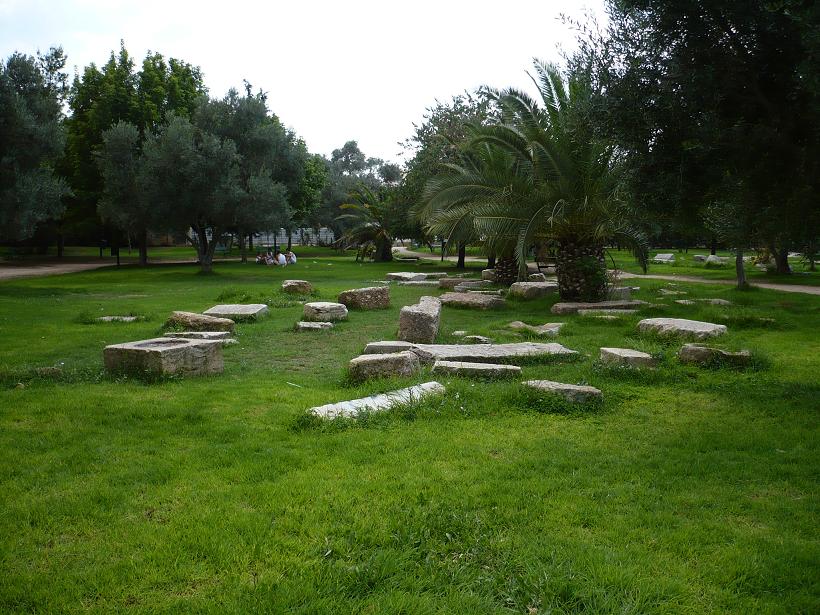
Akadimia Platonos area is around 3 km away from Syntagma Square, which is named after Plato’s Academy, which he founded in the area in 387 BC and which continued to operate until it was destroyed by the Roman Sulla in 86 BC.
Plato’s Academy is the first “University” in the Western world where science and philosophy were taught to students. Aristotle studied there for twenty years before founding his school, the Lyceum.
The site was rediscovered in the late 20th century and the visitor can see the ruins of the Sacred House Geometric Era, the Gymnasium, and the Peristyle Building (4th century BC), which is perhaps the only major building that belonged to the actual Academy of Plato.
Always open to the public, with no entrance fee. Official Site of Plato Academy with interesting details about the site.
How to get to Platonic Academy? The easiest way is to get a taxi if you stay around Acropolis. It shouldn’t cost you more than 5 euros and you can arrange to be picked up in half an hour or an hour later after you visit the park.
Jewish Monuments in Athens
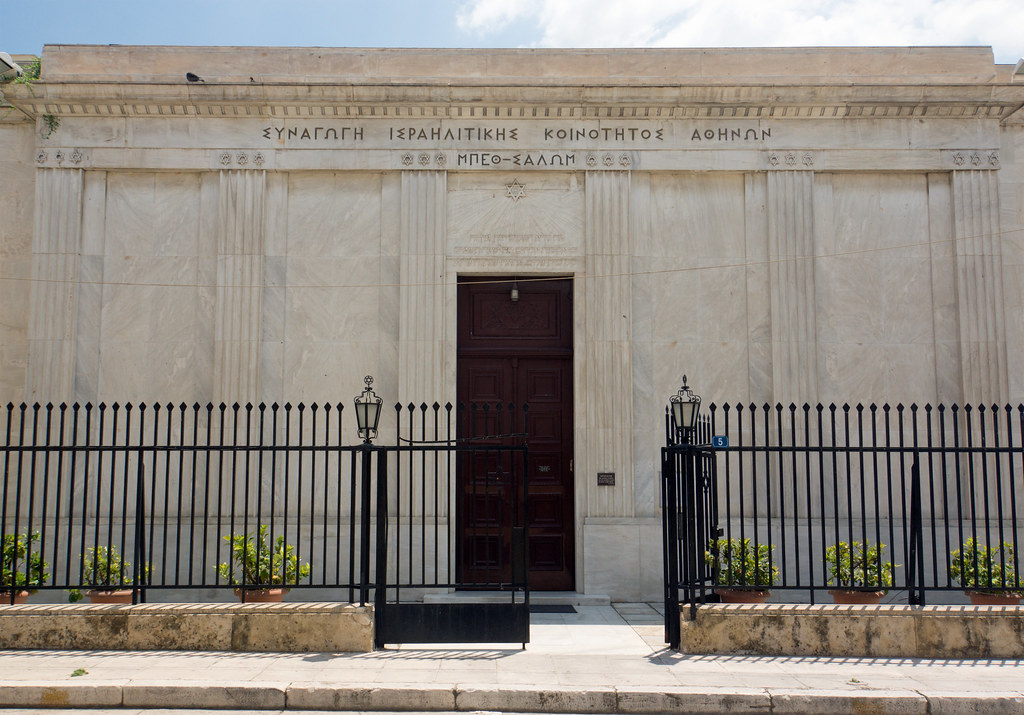
Read my dedicated post on the Complete List of Athens Jewish Monuments here.
Ottoman Monuments in Athens
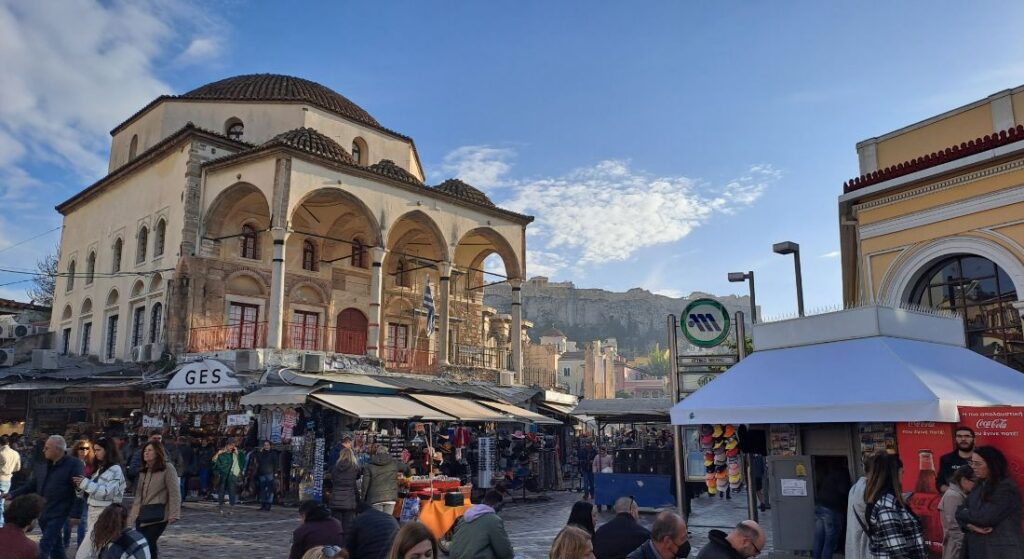
Read here my dedicated post on the Complete List of Ottoman Monuments in Athens.
2Day Itinerary Athens Greece (FAQs)
Is Parthenon the same as Acropolis?
No, it is not. The Acropolis is the Hill on top of which the Parthenon along with the Erechteion and Athena Nike Temples are housed. Related Post: 16 Things to Know Before You Visit Acropolis
Are there any UNESCO monuments in Athens?
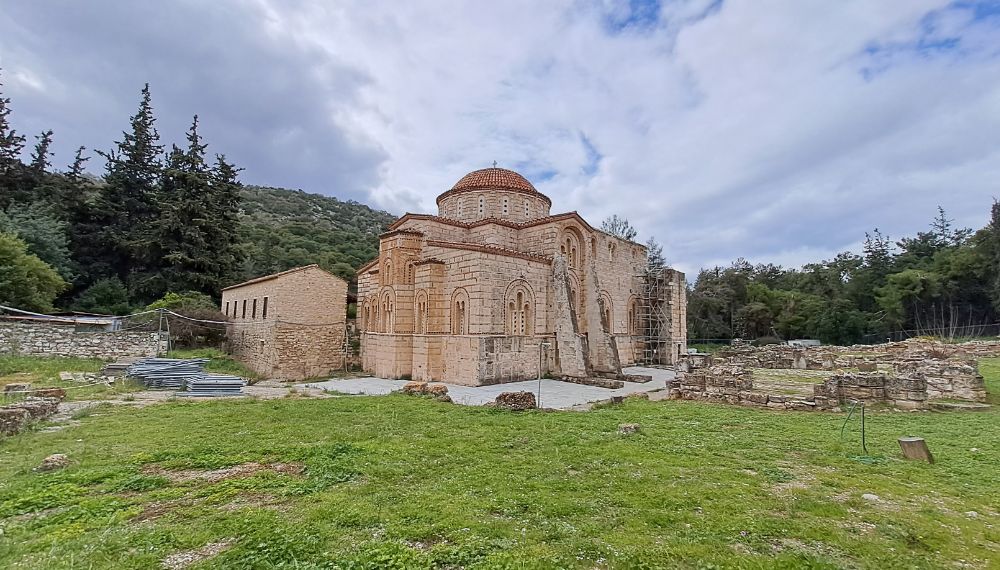
Acropolis Hill is a UNESCO World Heritage site as well as the Byzantine Monastery of Daphni, 12,5 km from Acropolis and toward Eleusis town in the Peloponnese. They have also added Ancient Lavrion near the Temple of Poseidon in Sounion in a tentative list (to be considered for inclusion in the future).
What is the Weather like in Athens? When is Best to Visit Athens?
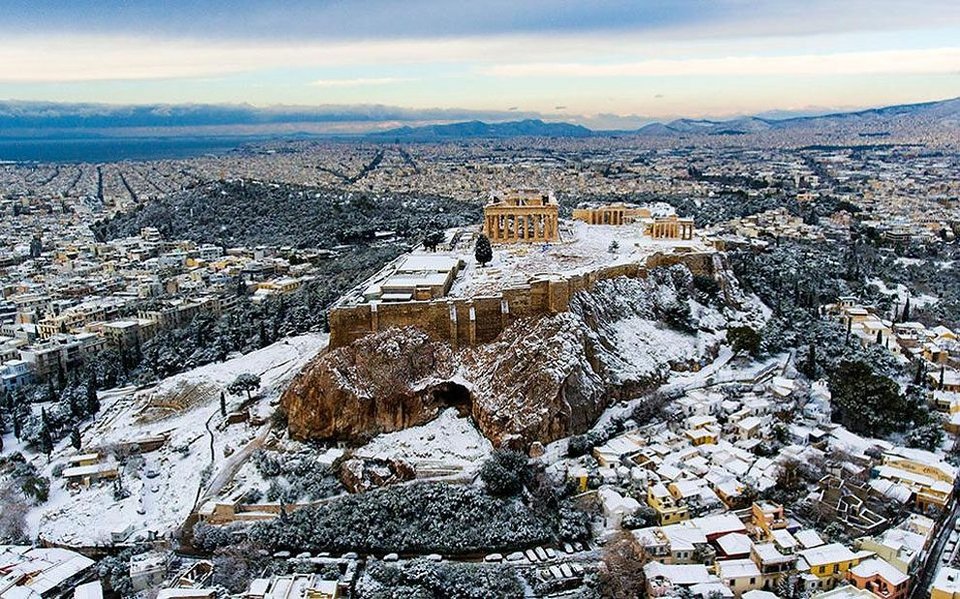
Greece has four distinct seasons, with hot and dry summers, wet/cold/snowy winters, and mild spring and fall. Read my dedicated post on when is the best time to go to Greece for more details on the Greek climate.
Should I buy the Acropolis Ticket in advance in the Summer?

Yes, do purchase the Acropolis ticket in advance if you are visiting Athens in the summer (normal €20), as the lines can get crazy and long. If you are going to more sites than just Acropolis you better buy the combo ticket (€30) that permits entry within five days to the:
- Acropolis Hill and Slopes
- Ancient Agora of Athens and its Museum
- Kerameikos Archaeological Site
- Hadrian’s Library
- Roman Agora
- Olympeio (Temple of Olympian Zeus)
- Lyceum of Aristotle
How much is the Ticket to the Sites?
Between April 1st and October 31st, the general admission ticket to the sites is the one defined by the Greek Ministry of Culture.
Certain groups are eligible for half-price or free entrance – usually for EU citizens. Check here to see if you are eligible for reduced entrance.
Half-Price Entrance (not valid for the combo ticket): All archaeological sites in Greece have a half-price ticket from November 1 to March 31
Free Entrance: From November to March, admission is free on the first Sunday of the month and on the dates March 6th, April 18th, May 18th, the last weekend of September, and October 28th.
Where to Stay in Athens for 2024
Looking for the best hotels and apartments near old Athens Plaka and Acropolis Parthenon? Find in my complete list below the best accommodation in Athens for a unique travel experience!
- Where to Stay in Plaka, Athens’ Old Town (Hotels and Apartments)
- Acropolis View Hotels & Apartments in Athens
- Best Athens Beach Hotels (By the Athens Riviera Coastline)
- Central Apartments in Athens (near Acropolis)
- Athens Budget Apartments
- Athens Budget Hotels
How to get to Piraeus Port from Athens Airport

- Bus: If you are arriving at Athens International Airport you can travel straight to the port by taking the X96 express bus (€5.5, children <6 yo, free entrance), which departs every 40 minutes and the average trip lasts 1 hour – runs 24/7.
- Metro: (€9) is easily found across airport arrivals (blue line – M3) going directly to Piraeus port. The average trip to Piraeus lasts 1 hour.
- Taxis are available in front of the airport (around €40 to Athens, €55-60 to Piraeus (depending on the traffic in Kifisos), and take up to 3 or 4 people with small luggage)
- Rent a car with Discover Cars for reliable, new cars at affordable prices
- You don’t like driving but love hassle-free solutions? Book a Private transfer with an English-speaking driver from Athens International Airport to Piraeus Ferries, or anywhere else in Greece
- Are you looking for domestic flights in Greece? Check out the official Aegean Airlines Website.
Some of my Favorite Travel Resources for Greece
- ‘Hello’ and ‘Thank You’ in Greek: “Ya sou” and “Efharisto”
- Booking.com: I use Booking.com mostly for Europe. It has over 1 Million properties to choose from, including everything from hotels to apartments and even hostels. And free cancellation!
- Expedia: I use Expedia for the best hotel descriptions and amenities and a rewards points system for the rest of the world.
- All-Inclusive Resorts in Greece
- FerryScanner to book ferries to the Greek Islands
- Rent an Affordable Car in Greece
- Athens Metro Website (timetables and ticket info)
- Map of Athens Metro
- Trains (Hellenic Train)
- Public Buses KTEL
- Get Your Guide: For all your day or multi-day tours and city guide needs, I use Get Your Guide
- Emergency Numbers Anywhere in Greece: AMBULANCE 166 – FIRE 199 – POLICE 100– EMERGENCY NUMBER 112

Hi Evgenia! Very nice blog post!
Thank you, Fred! I’m glad you liked it!